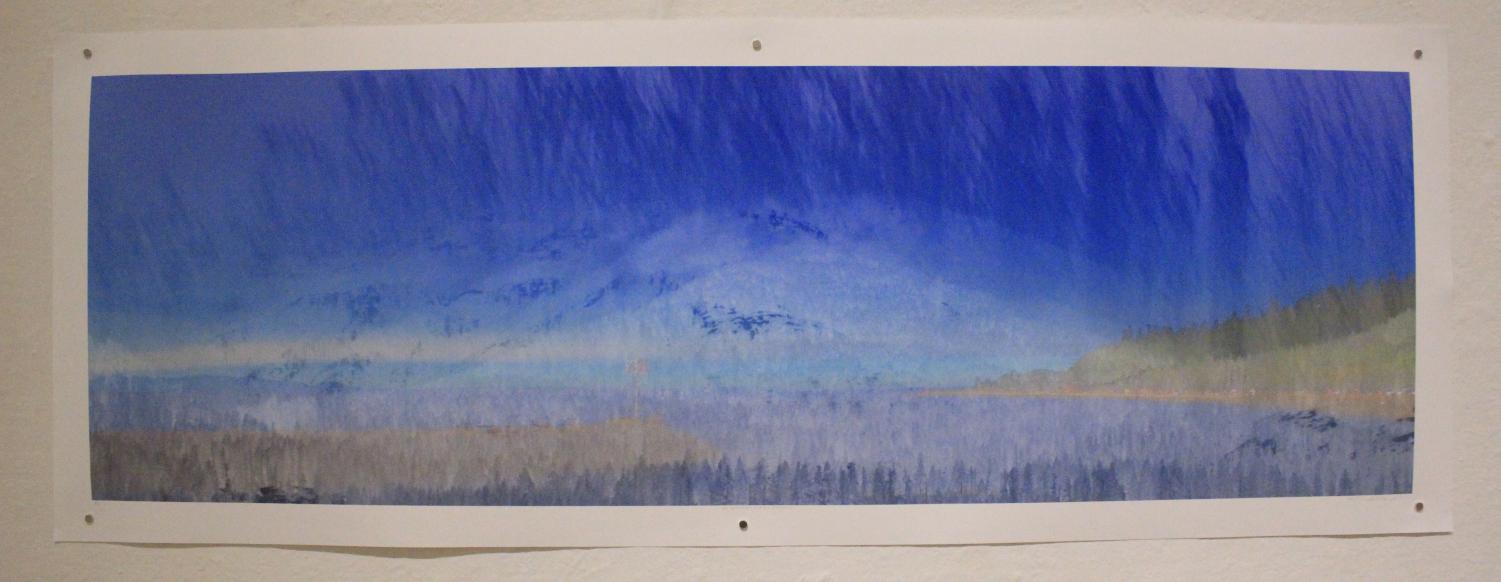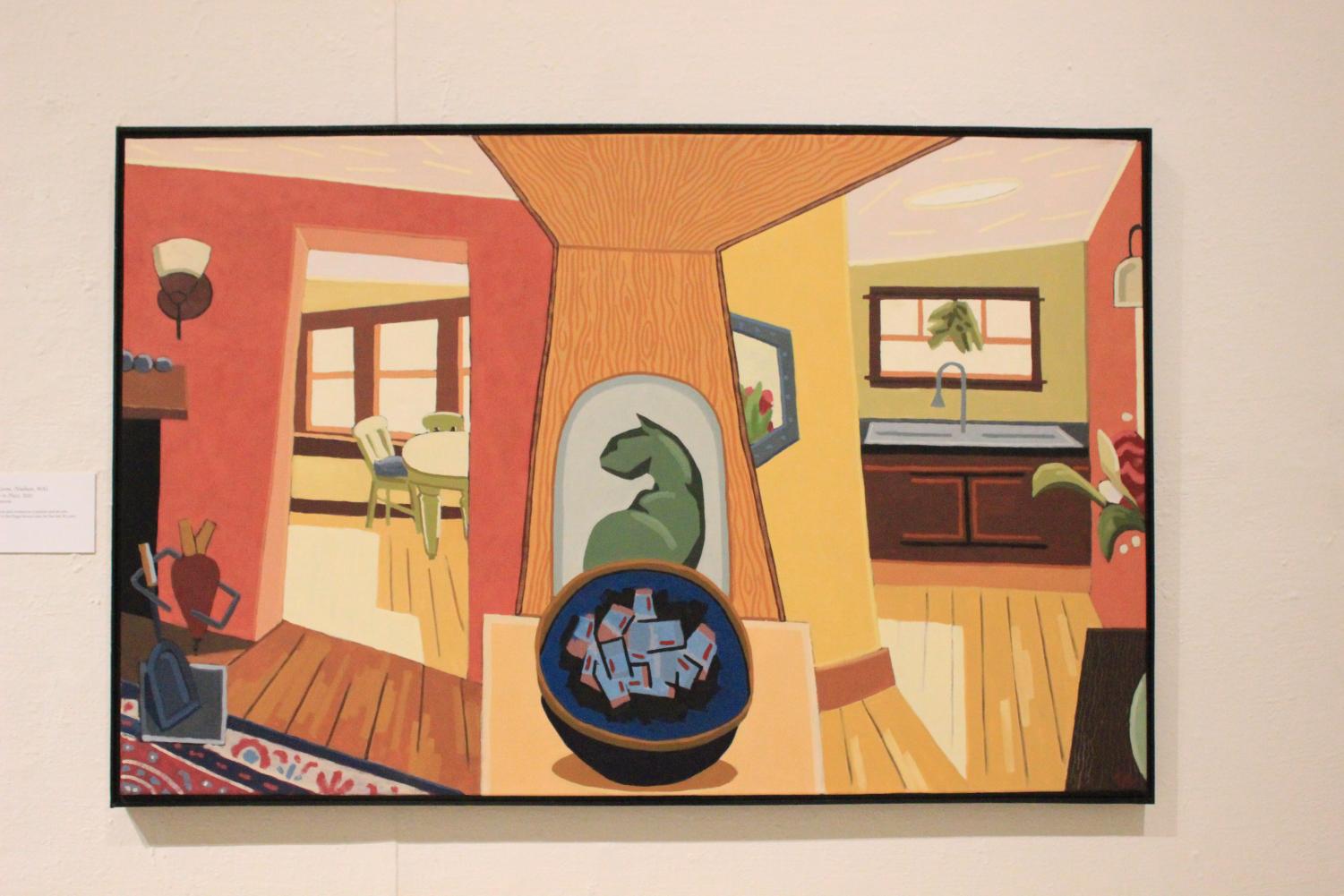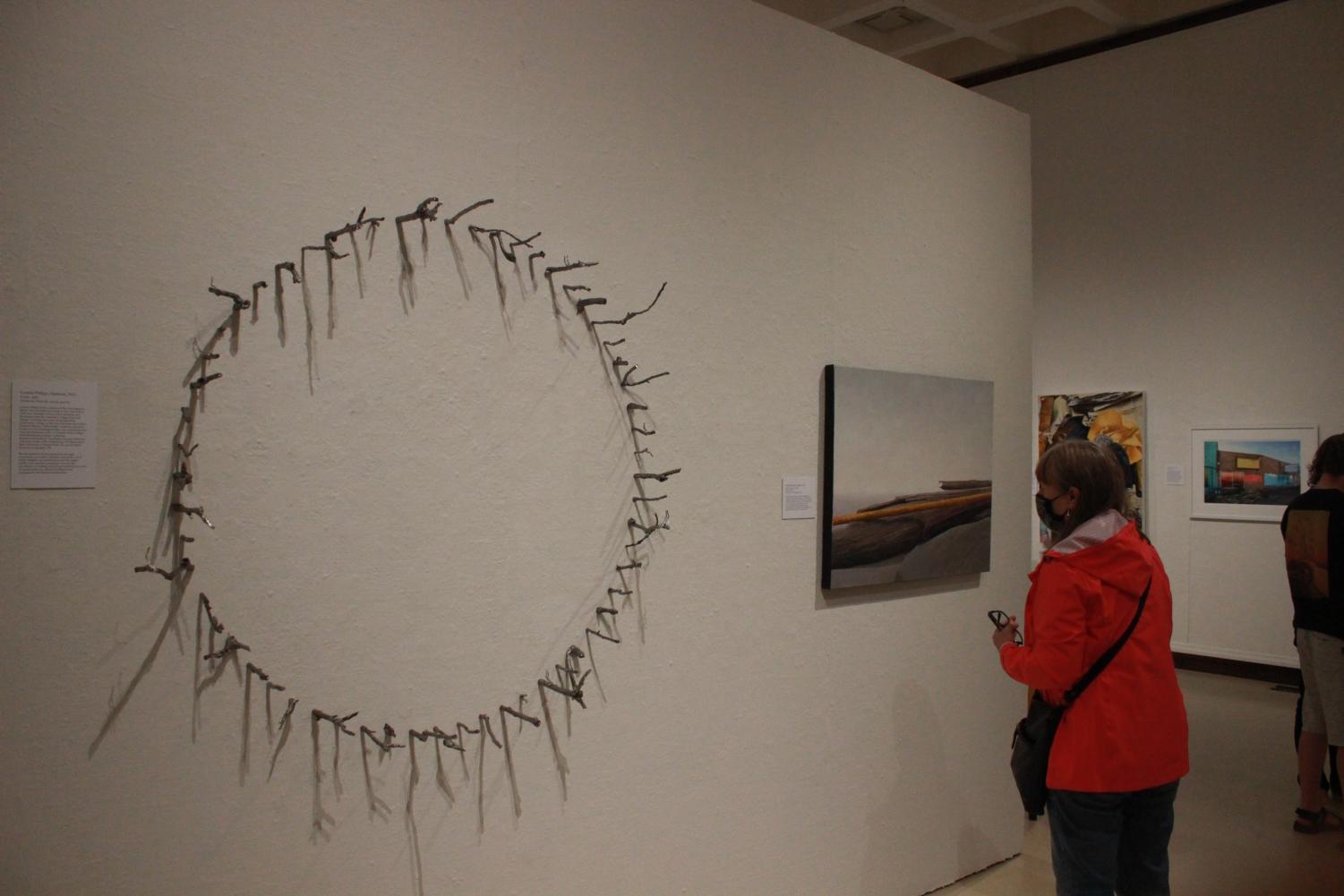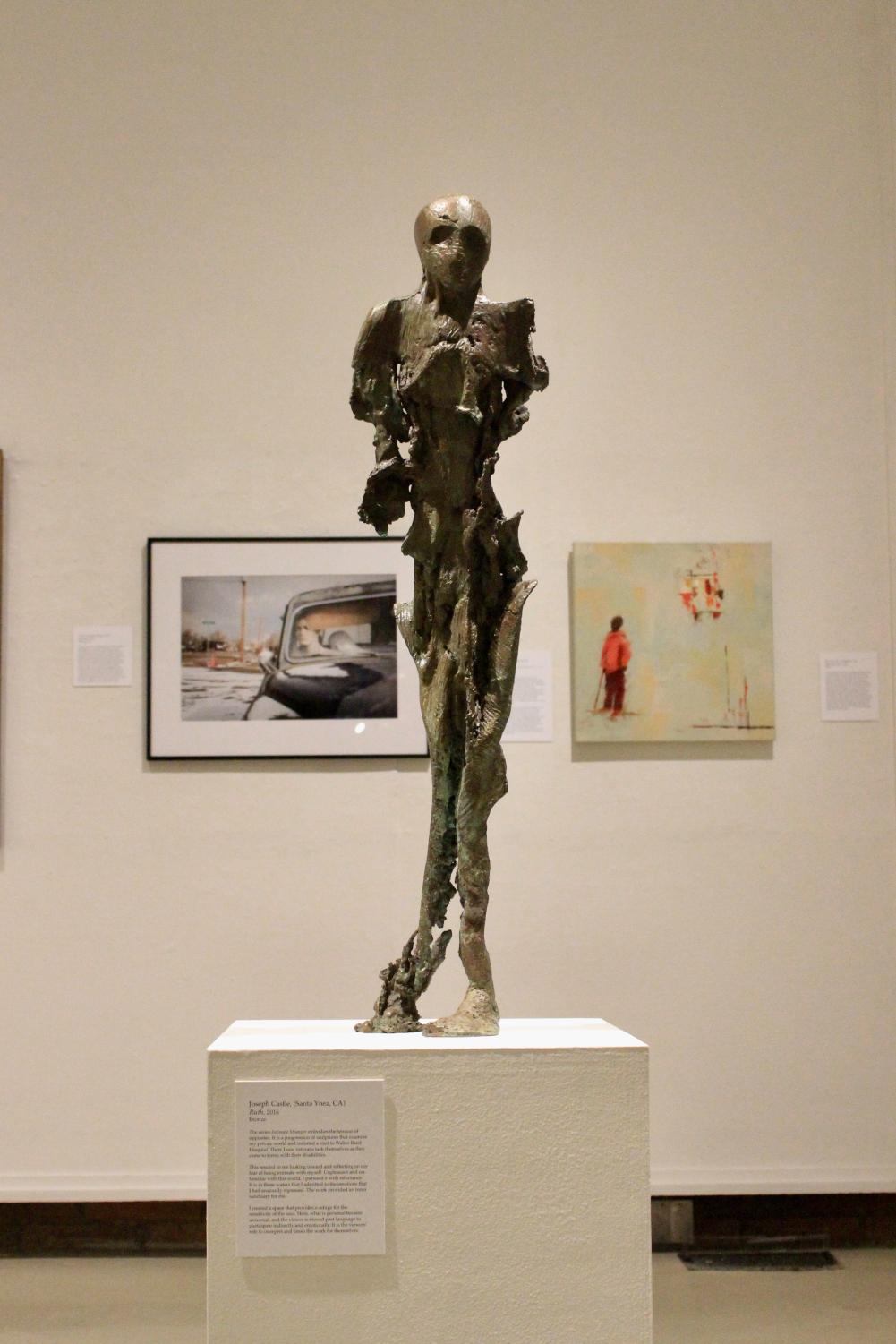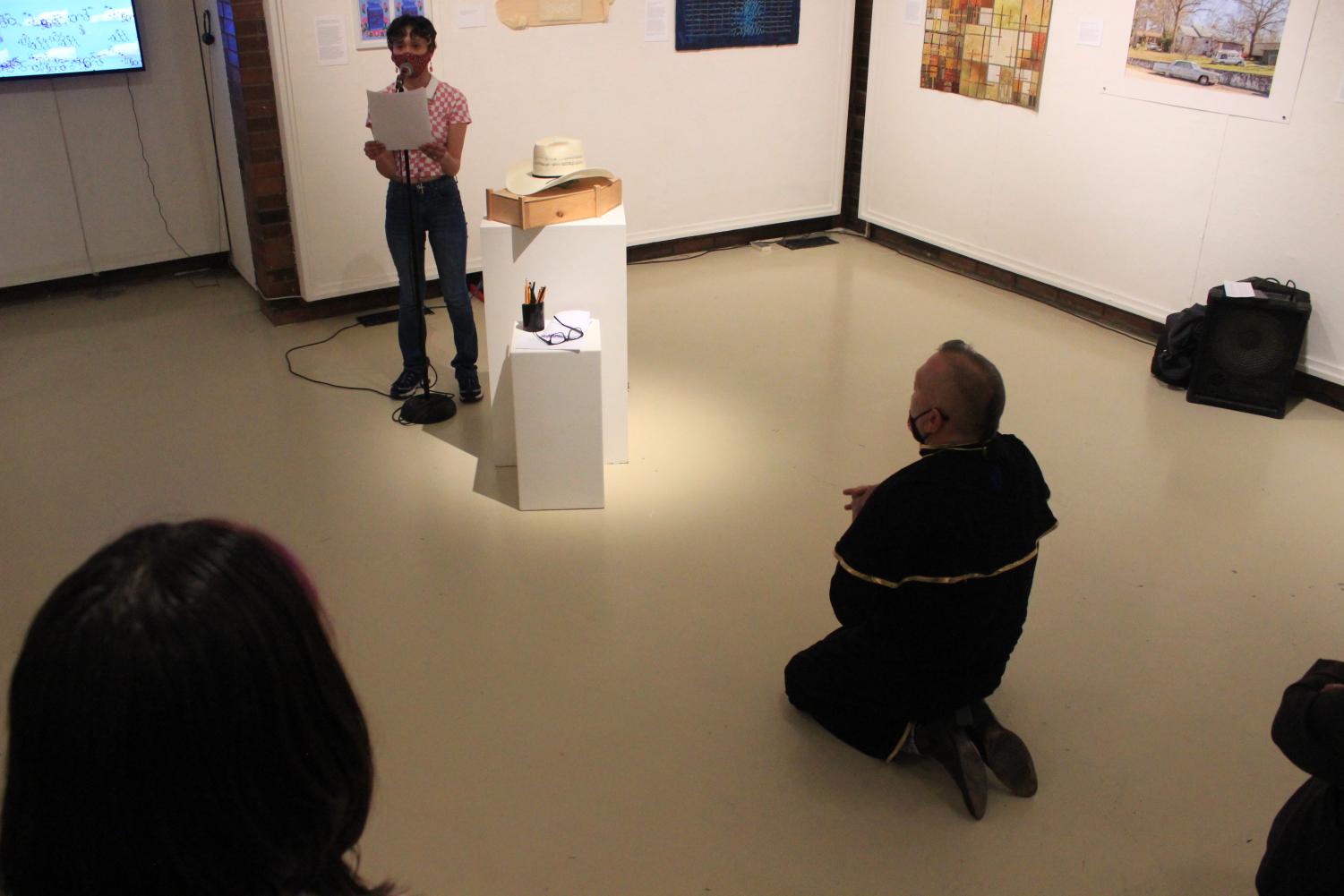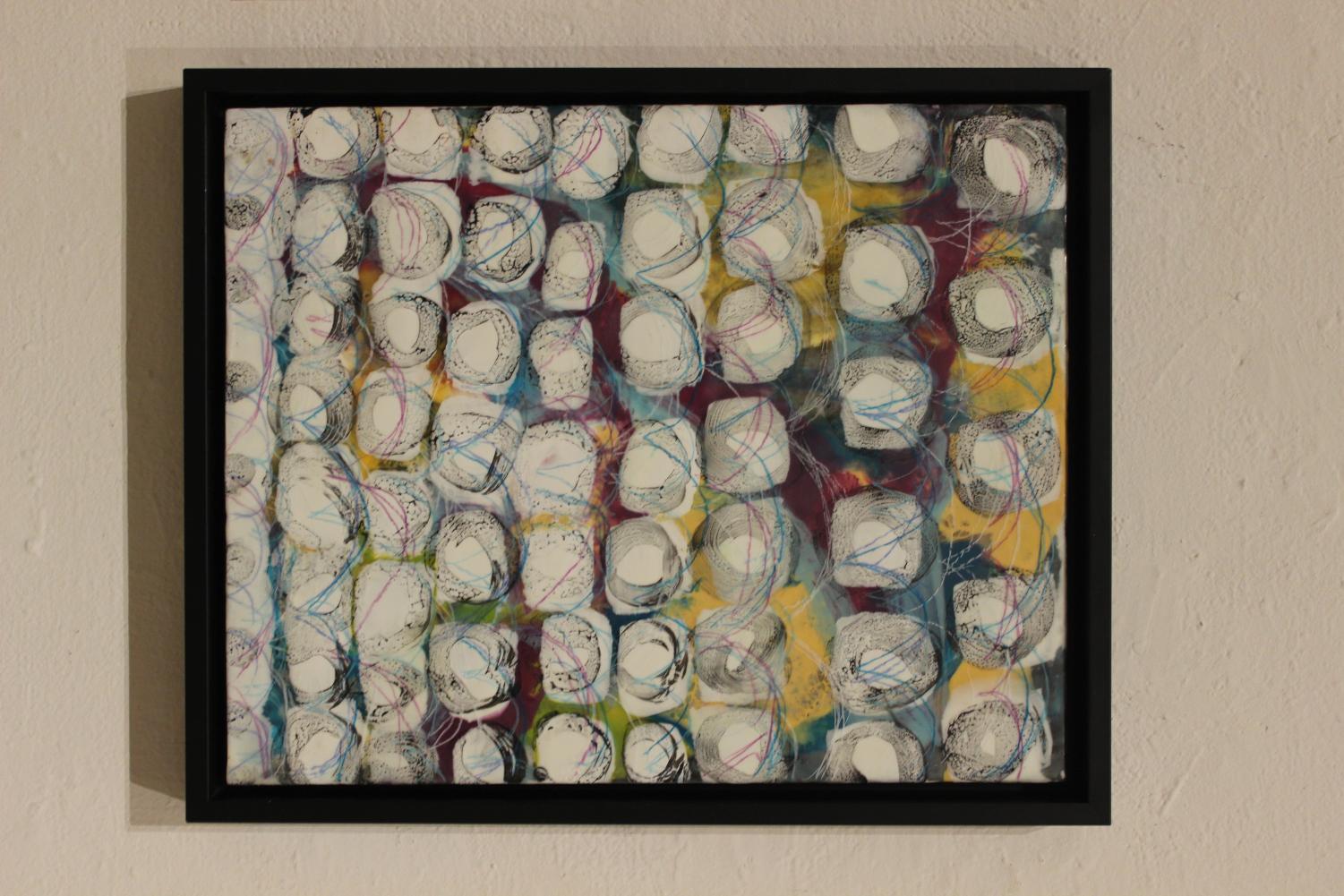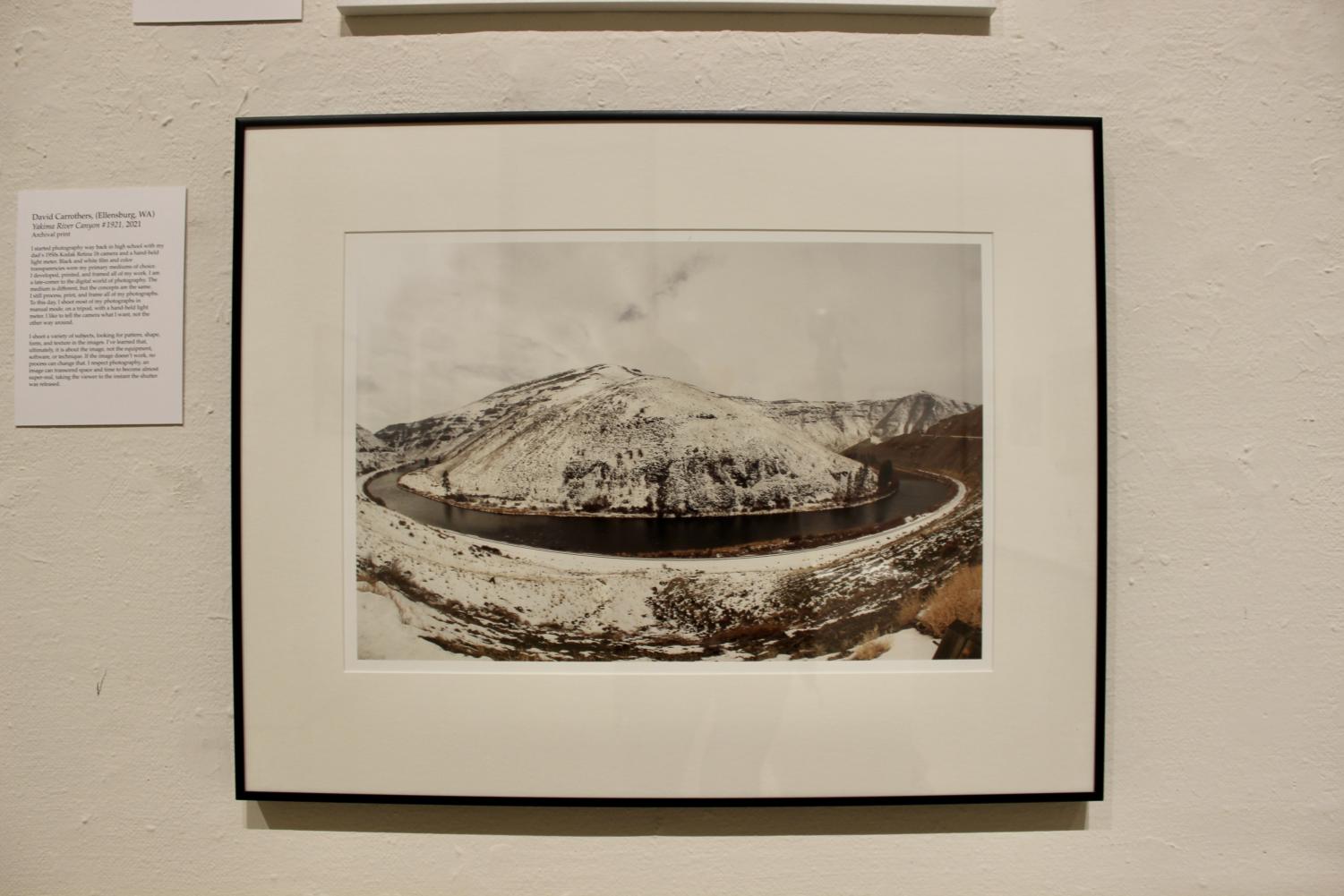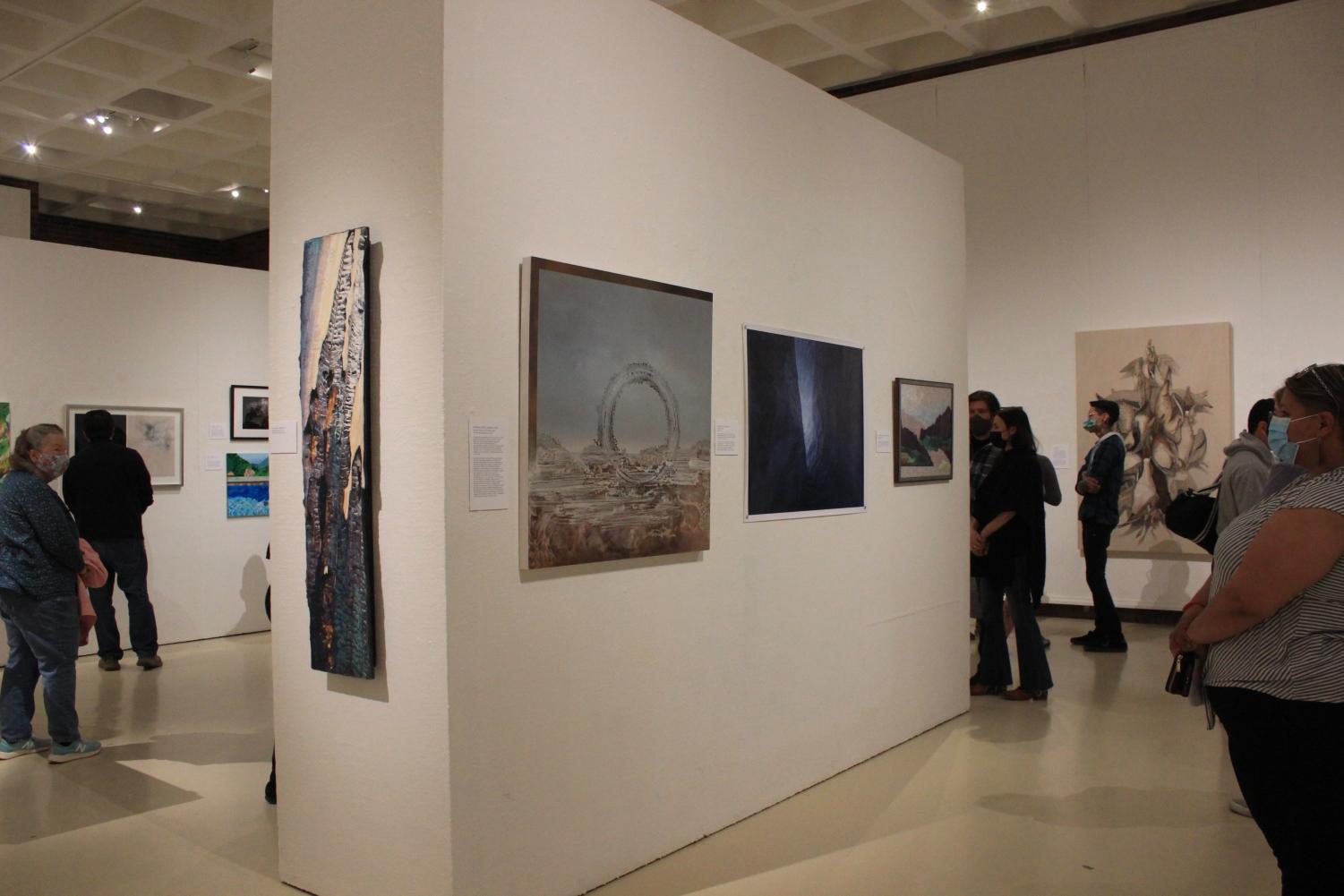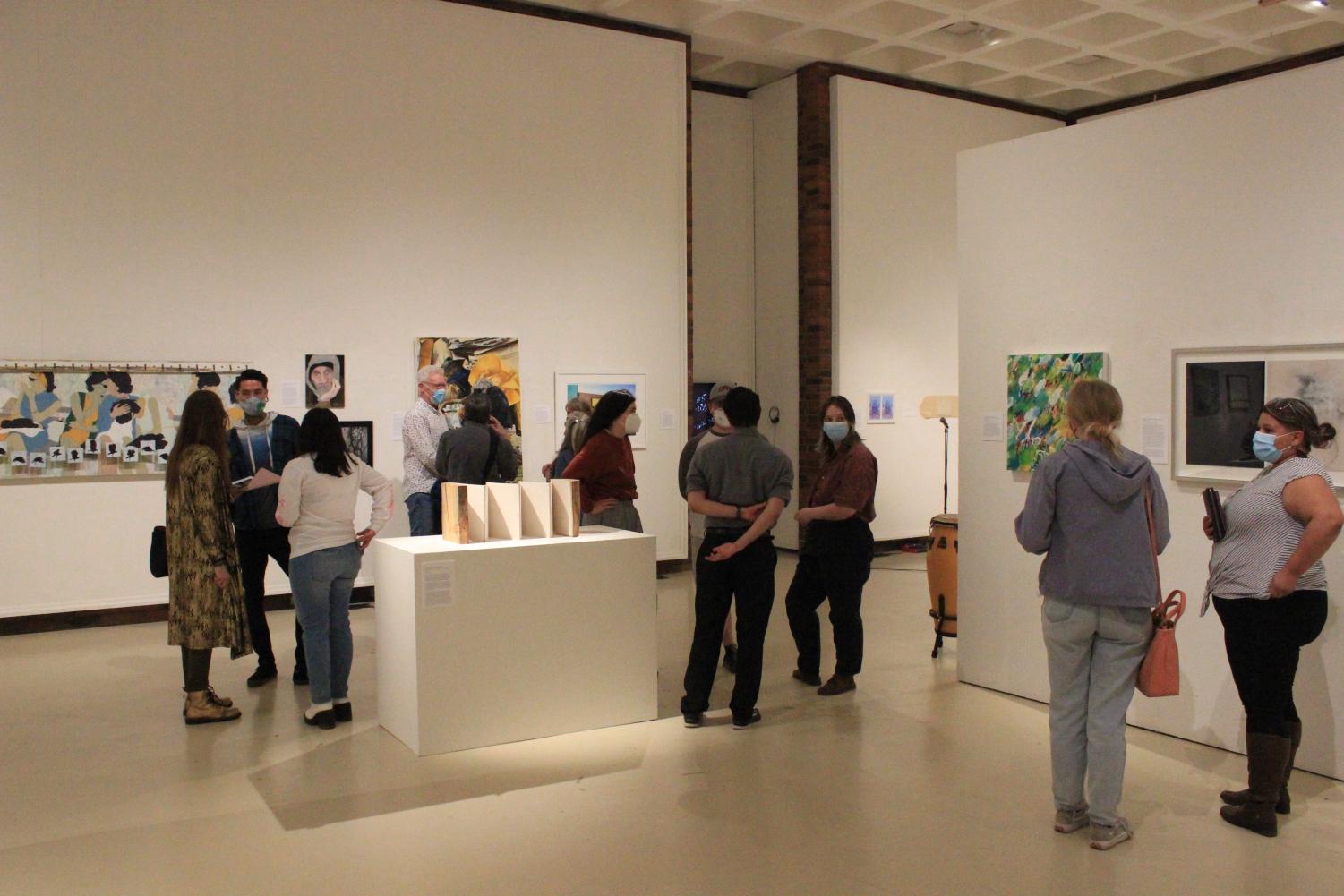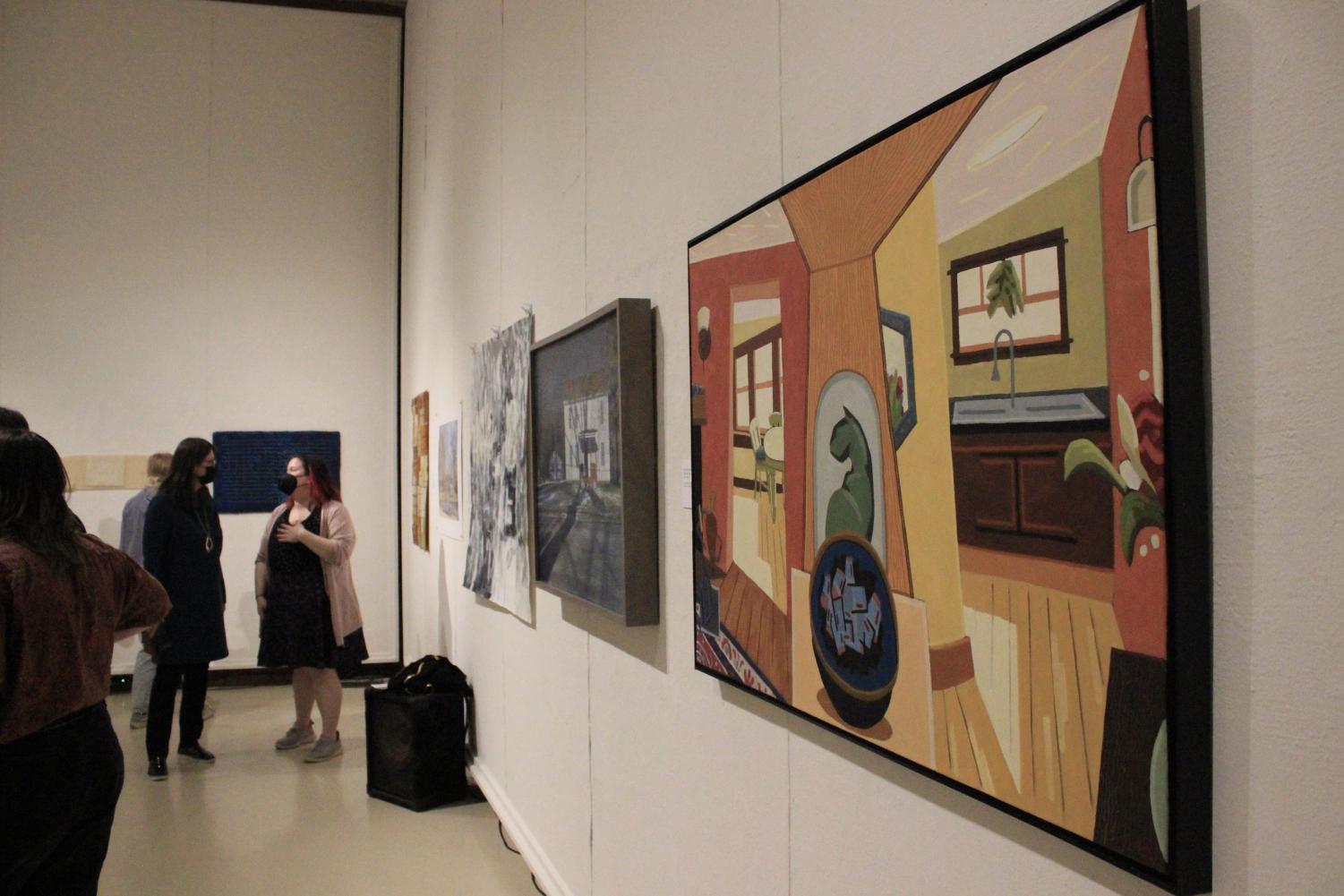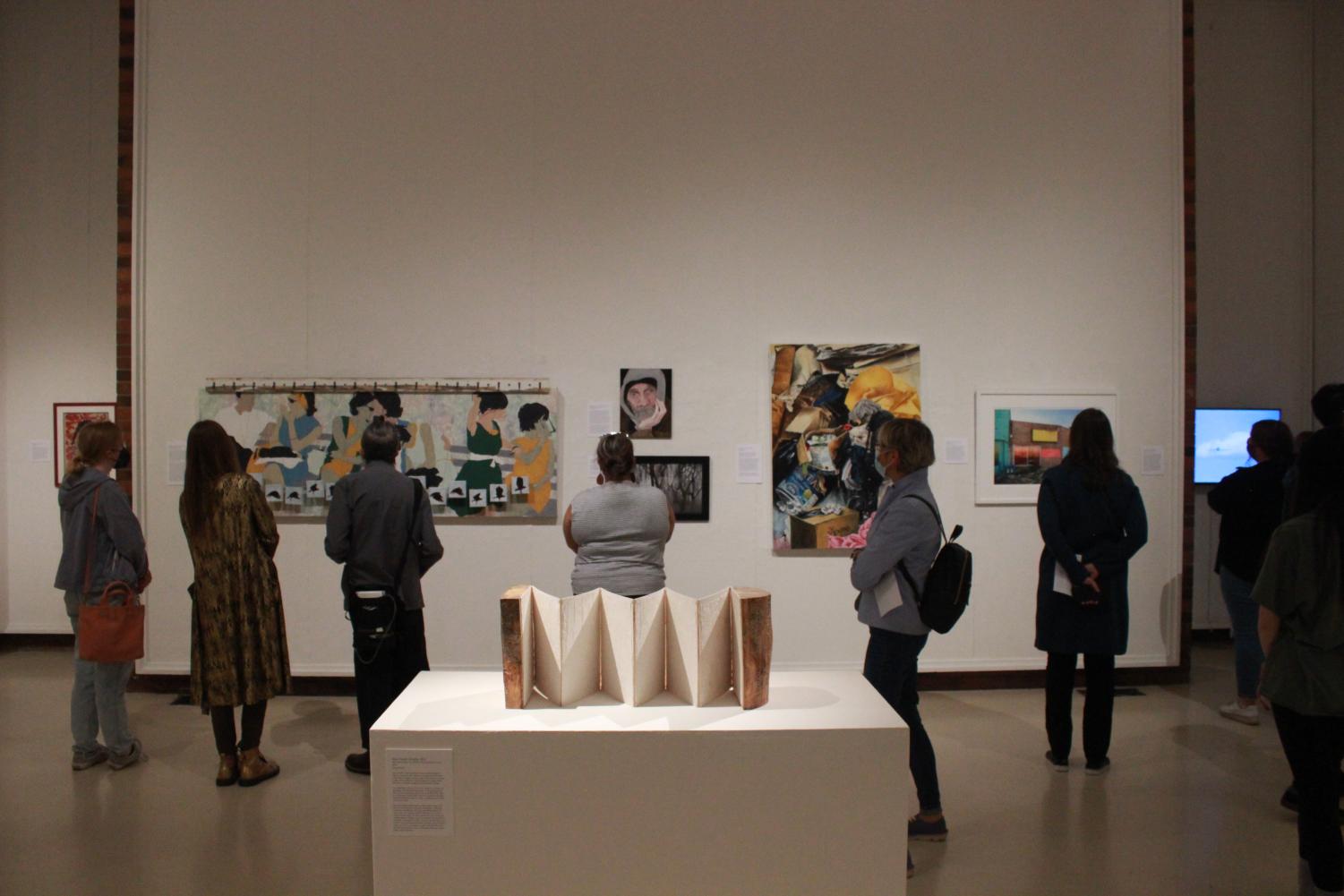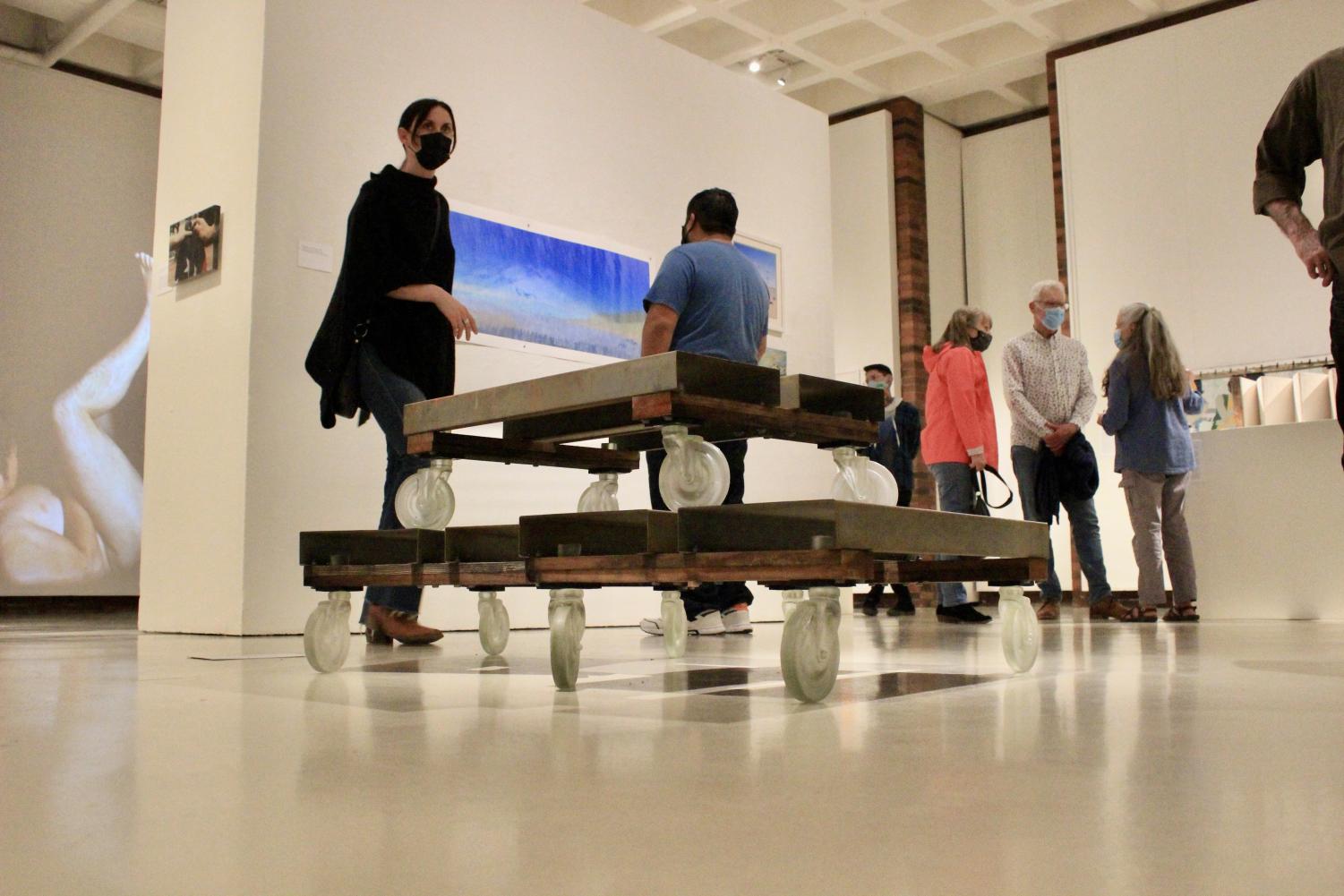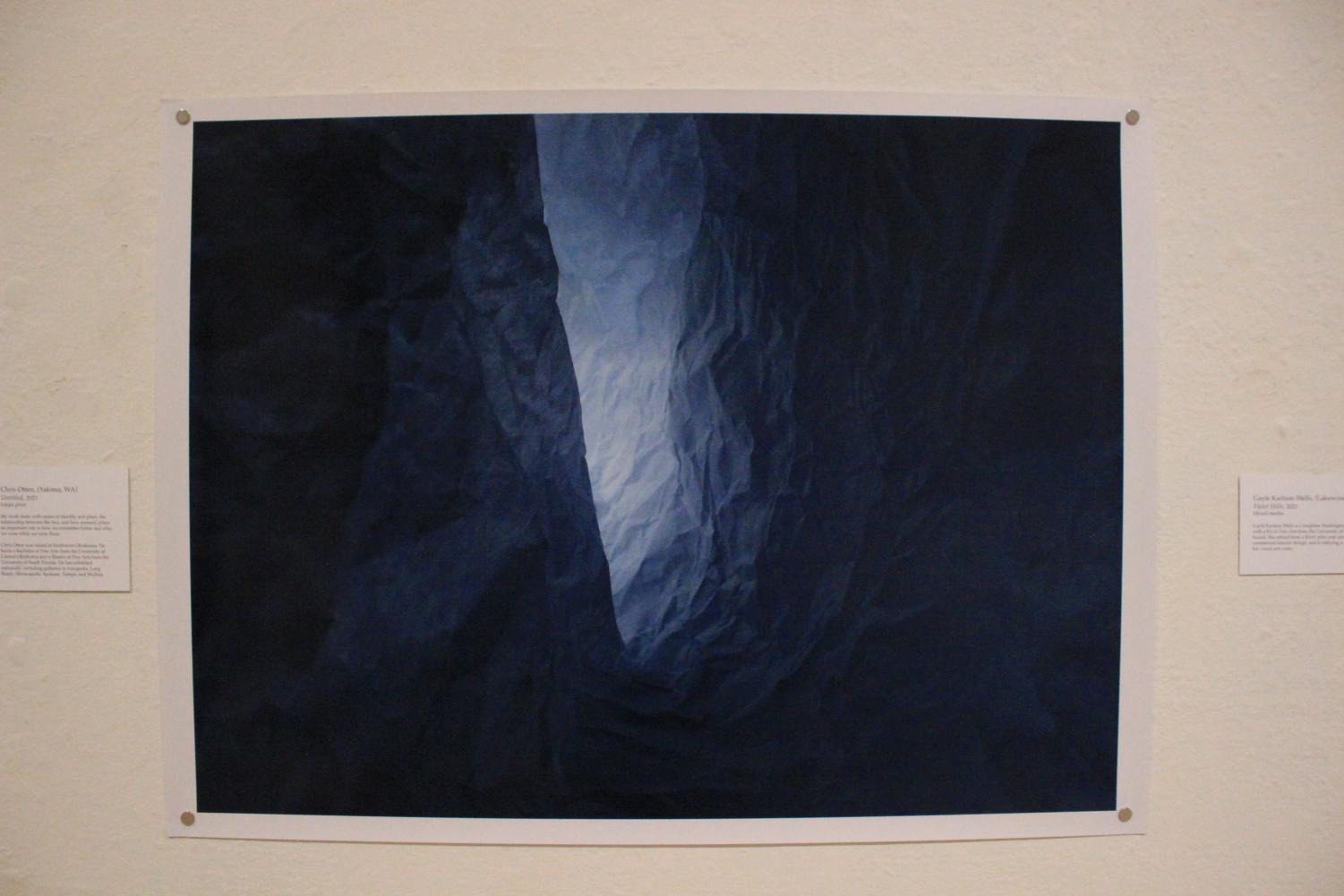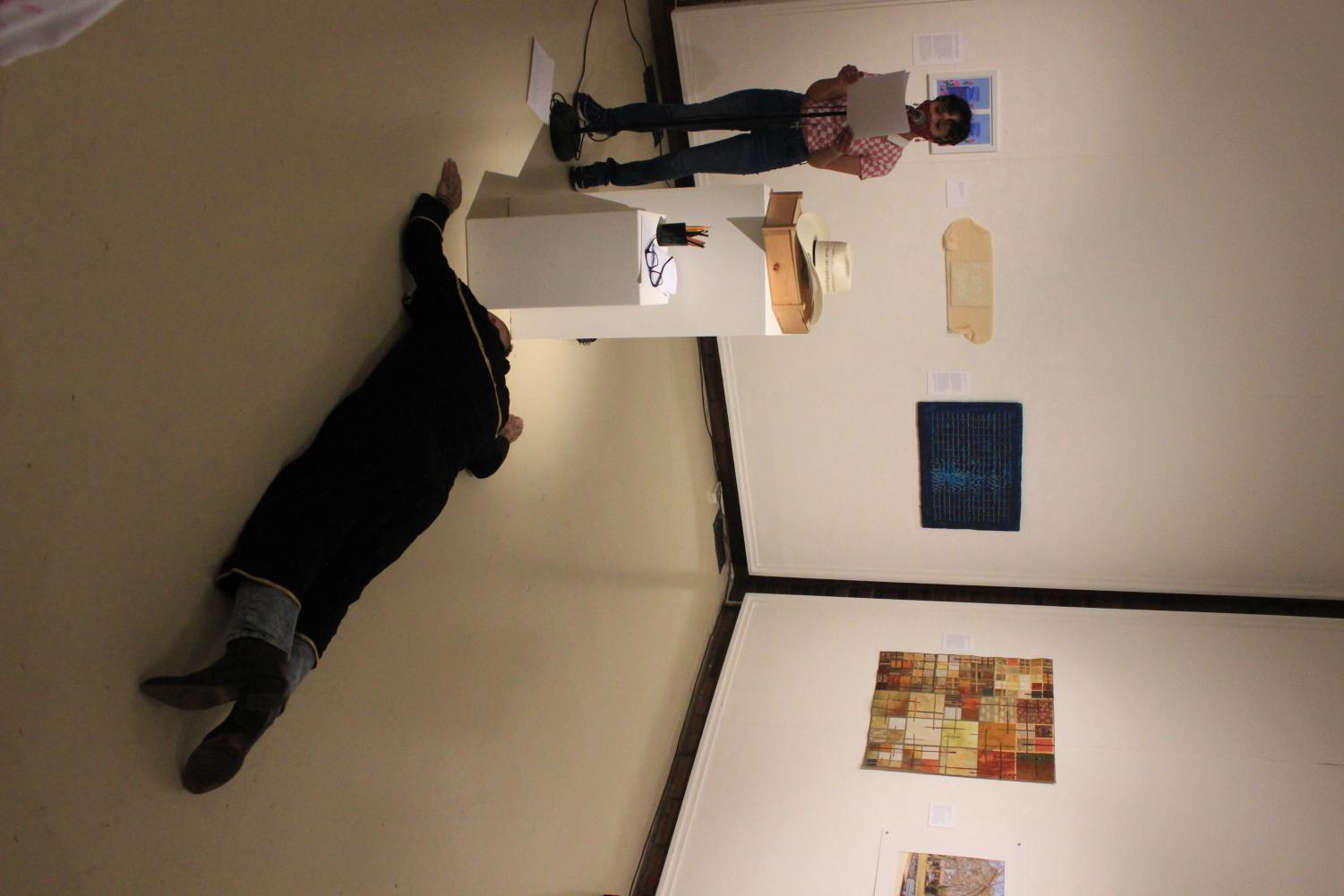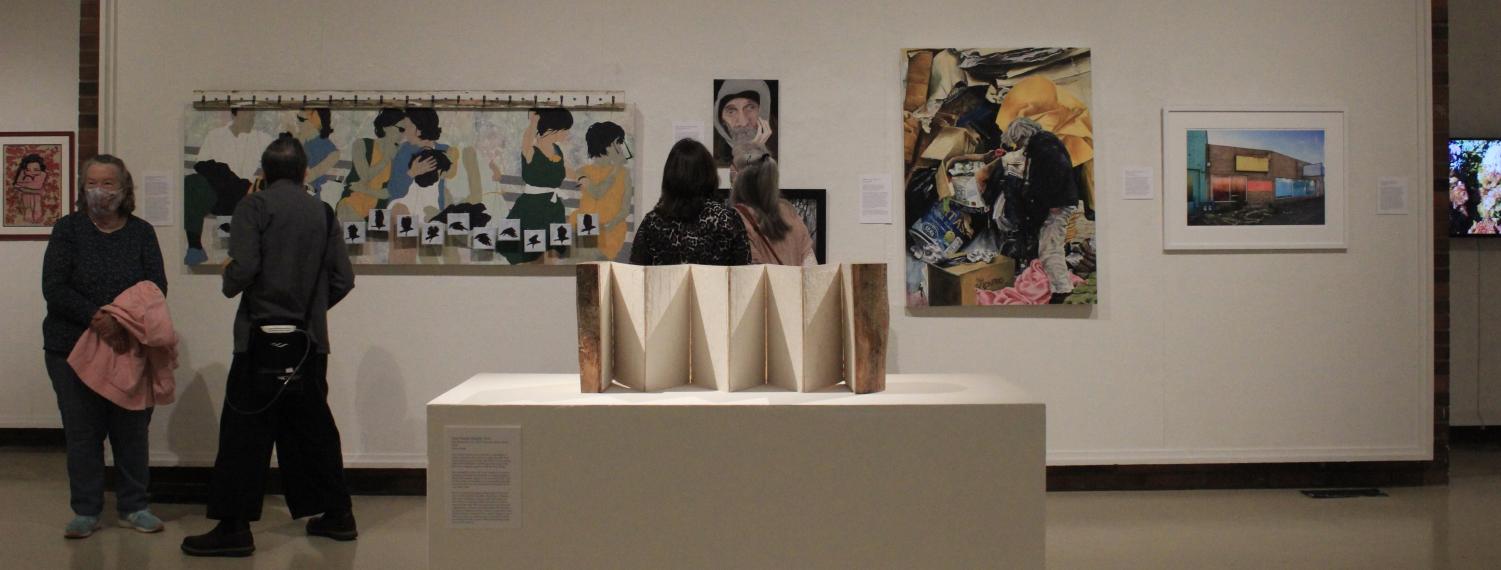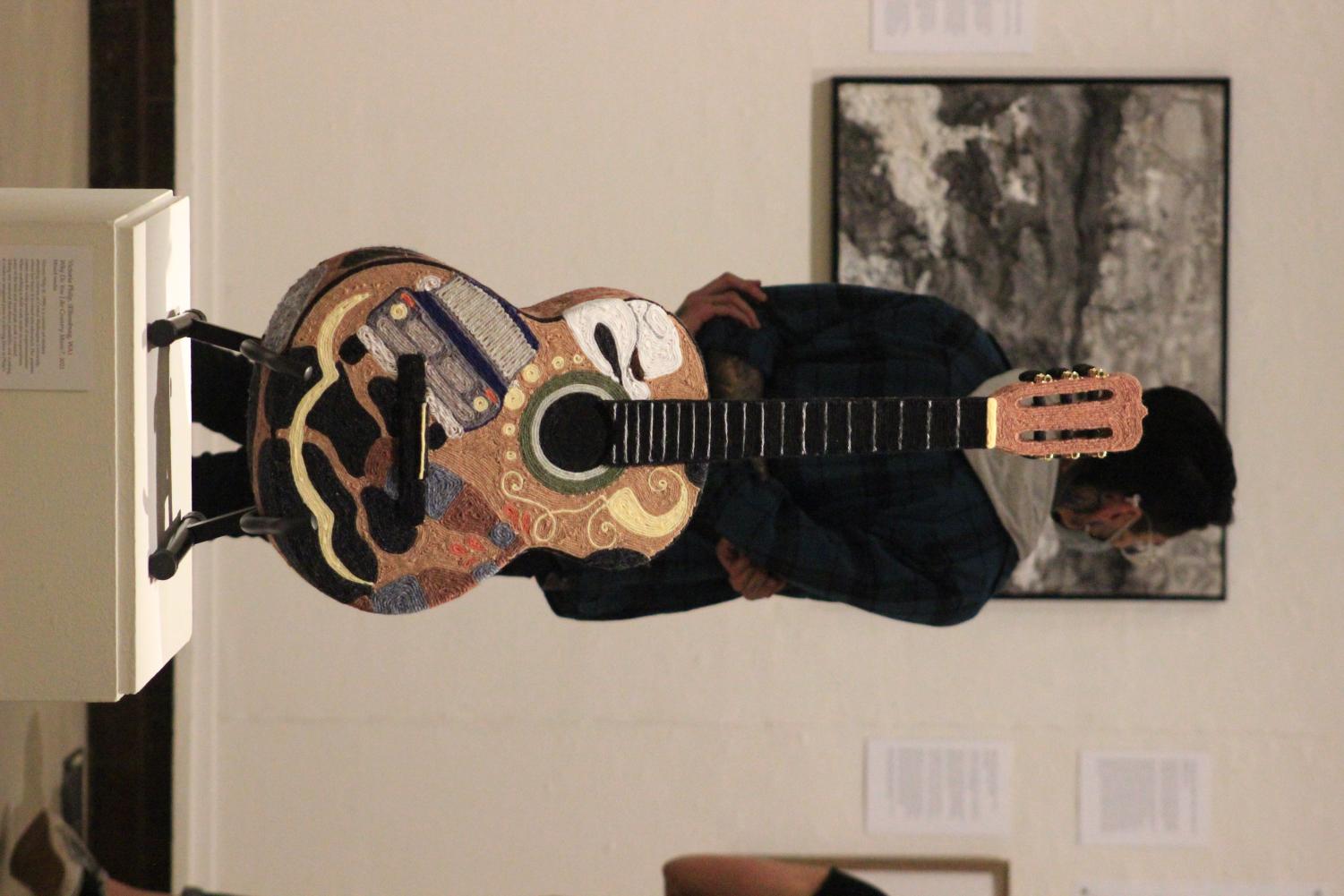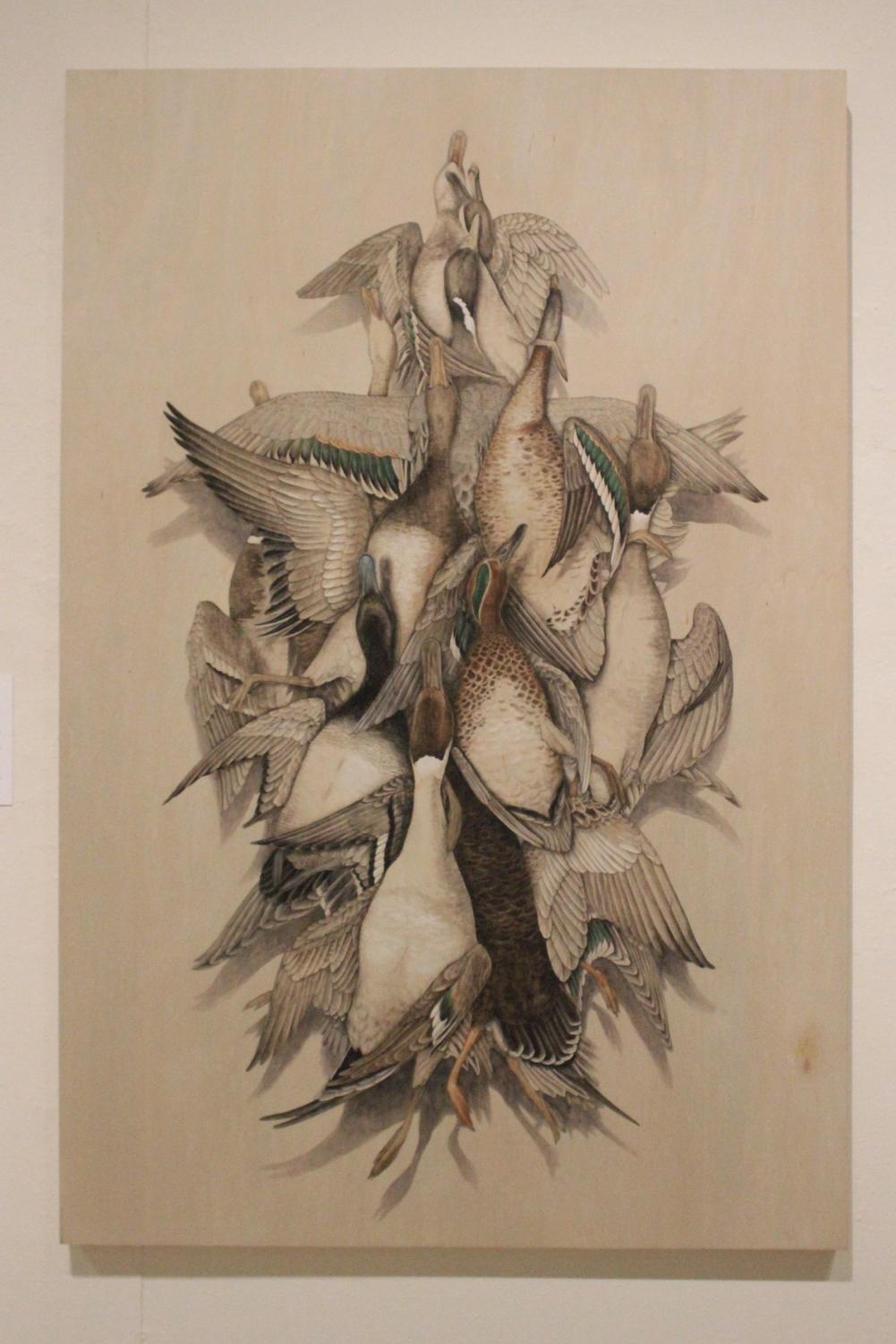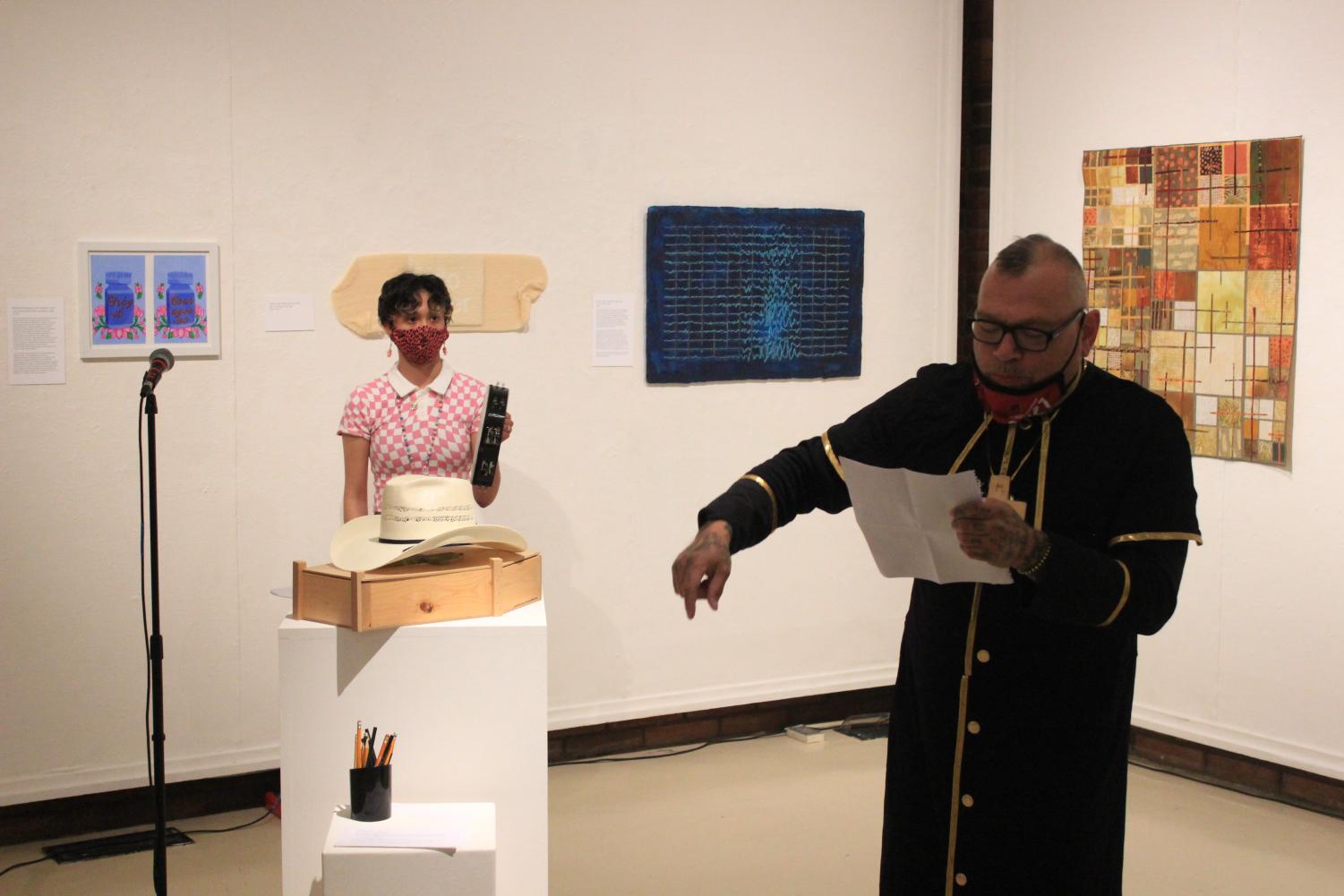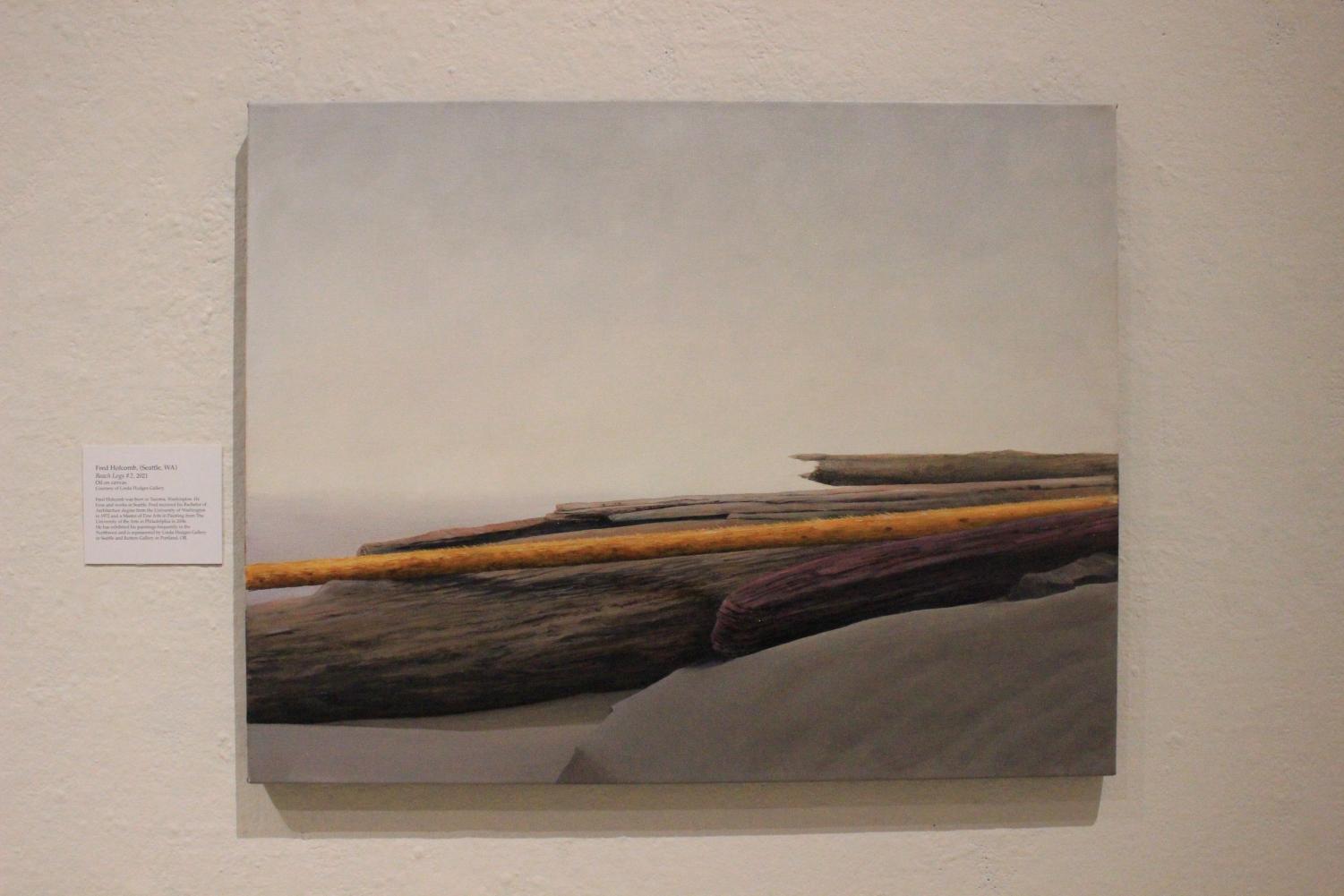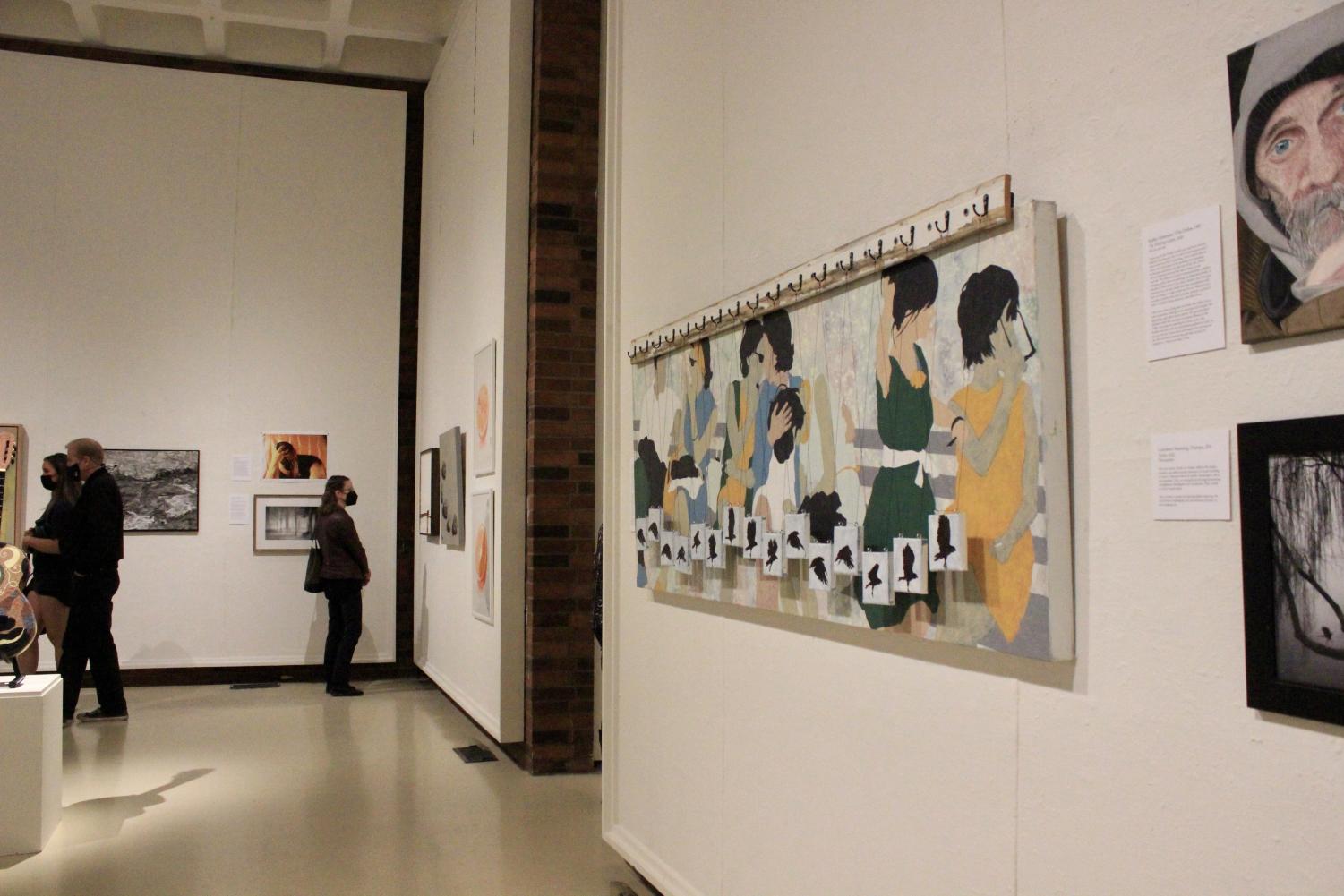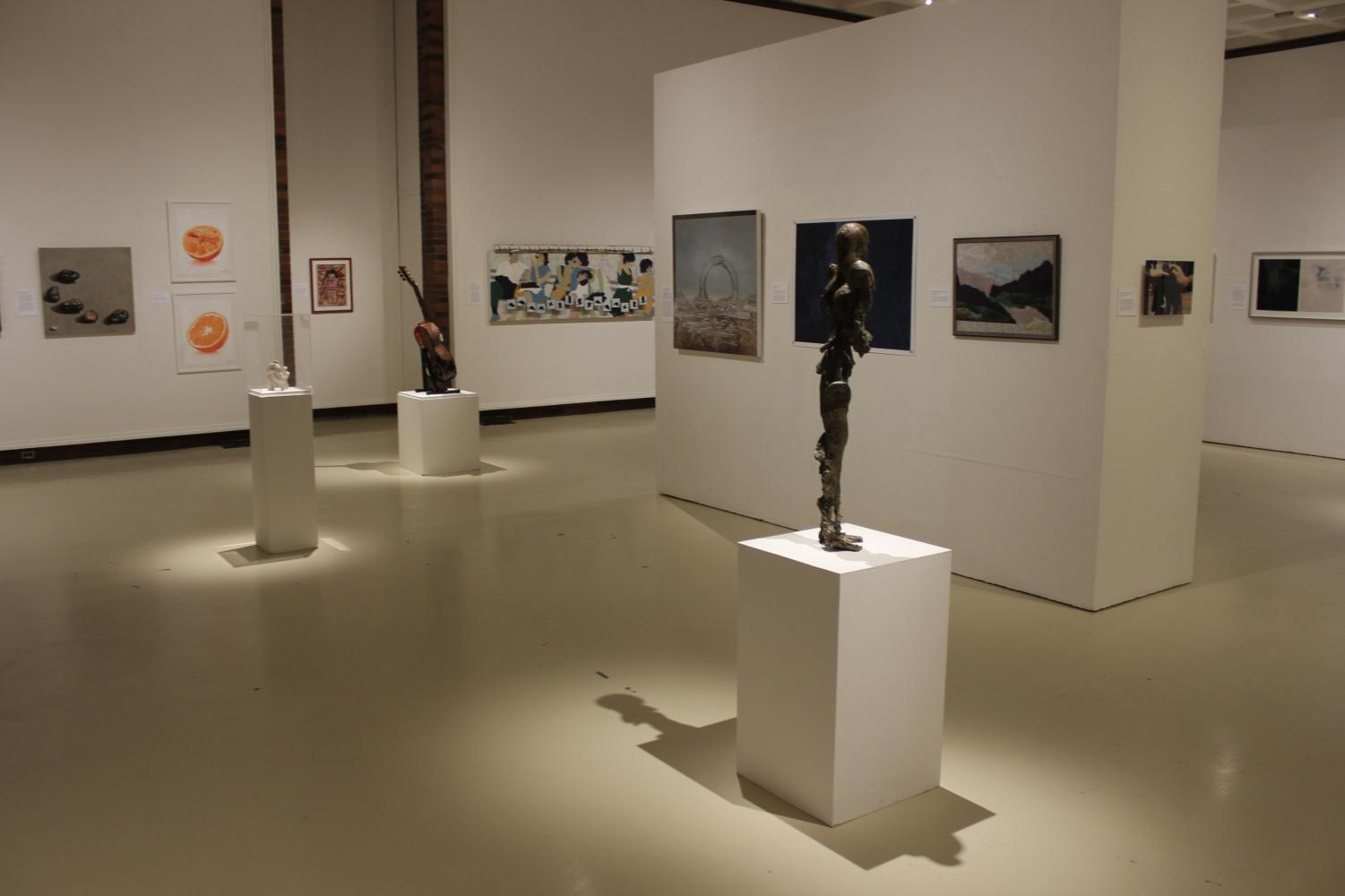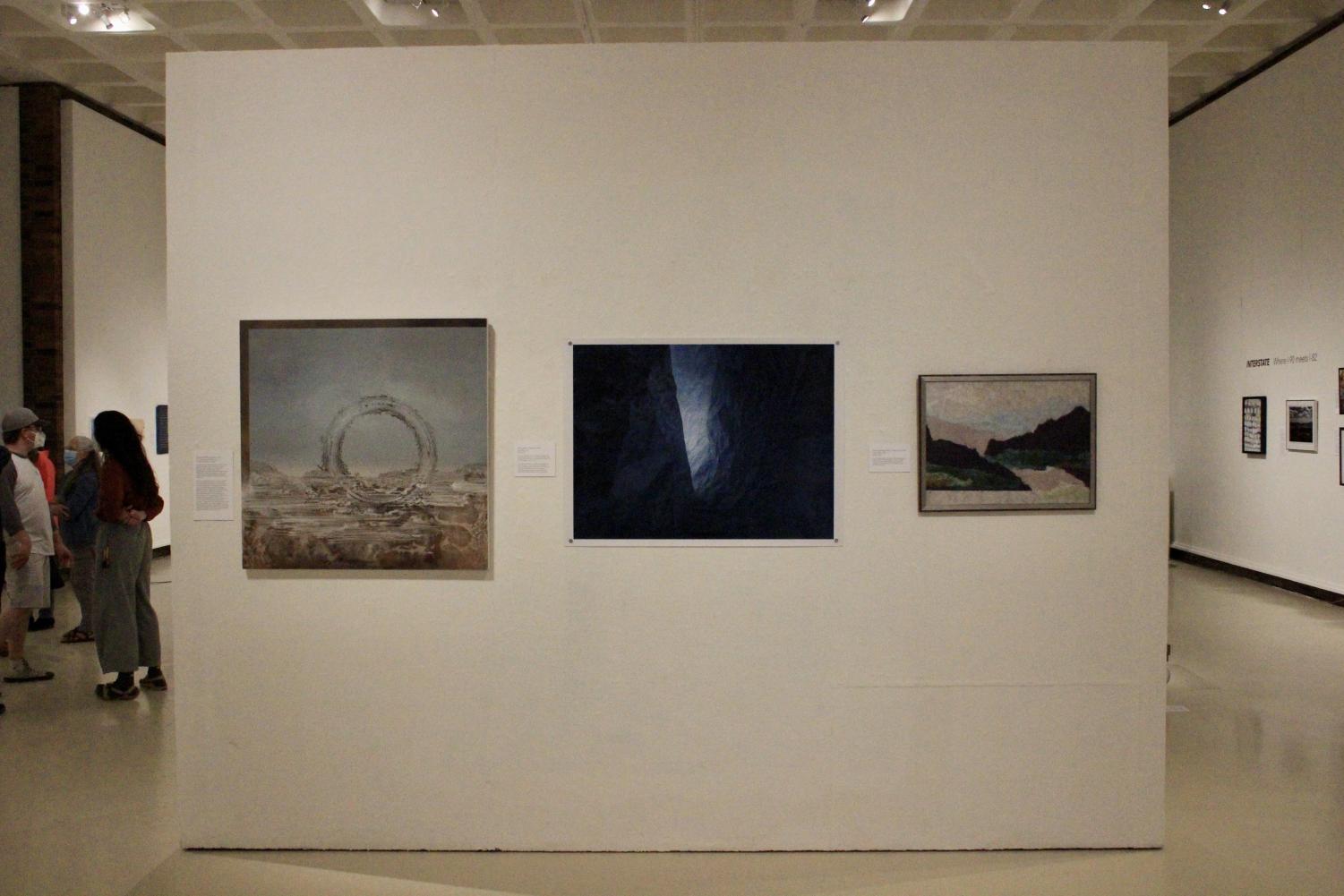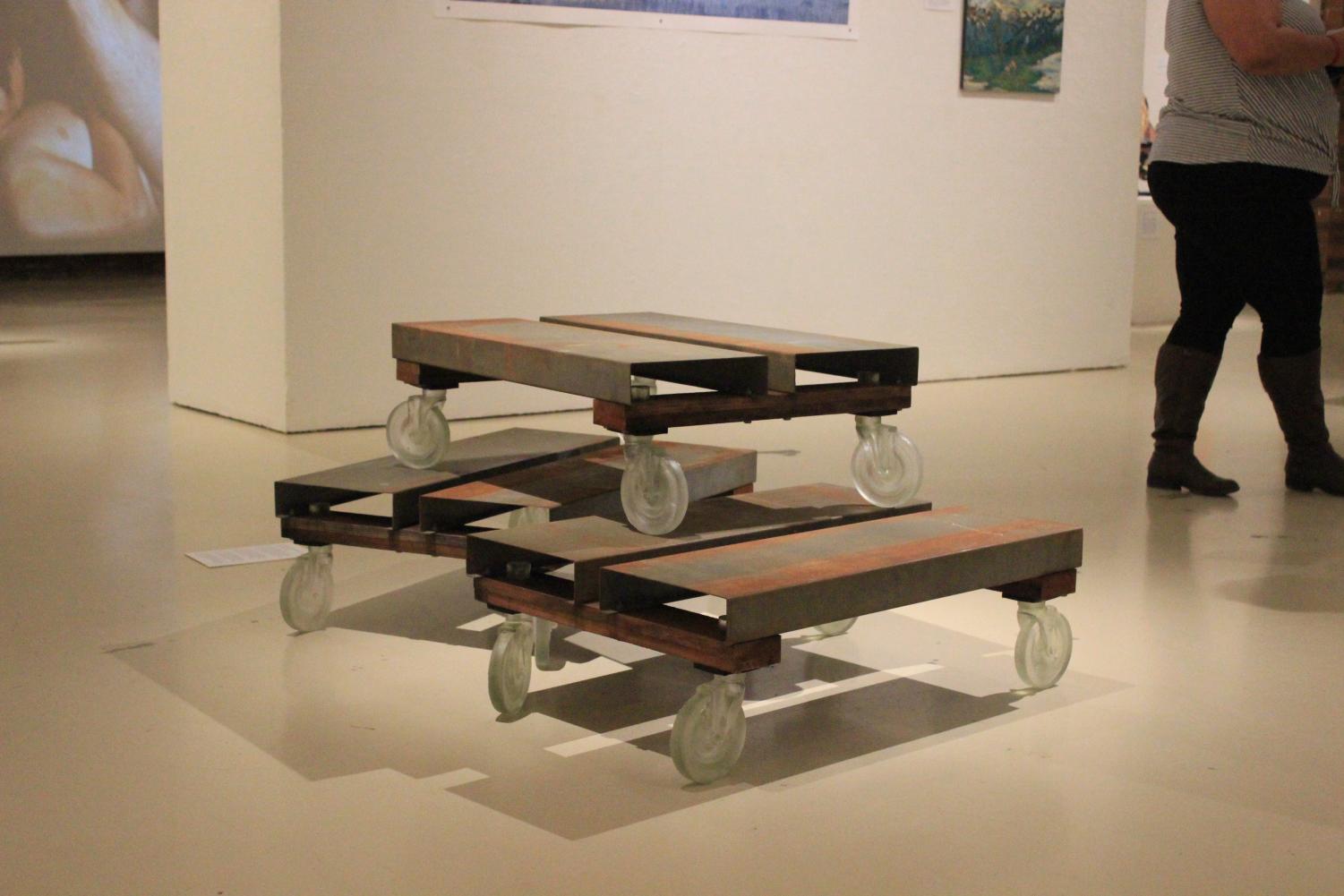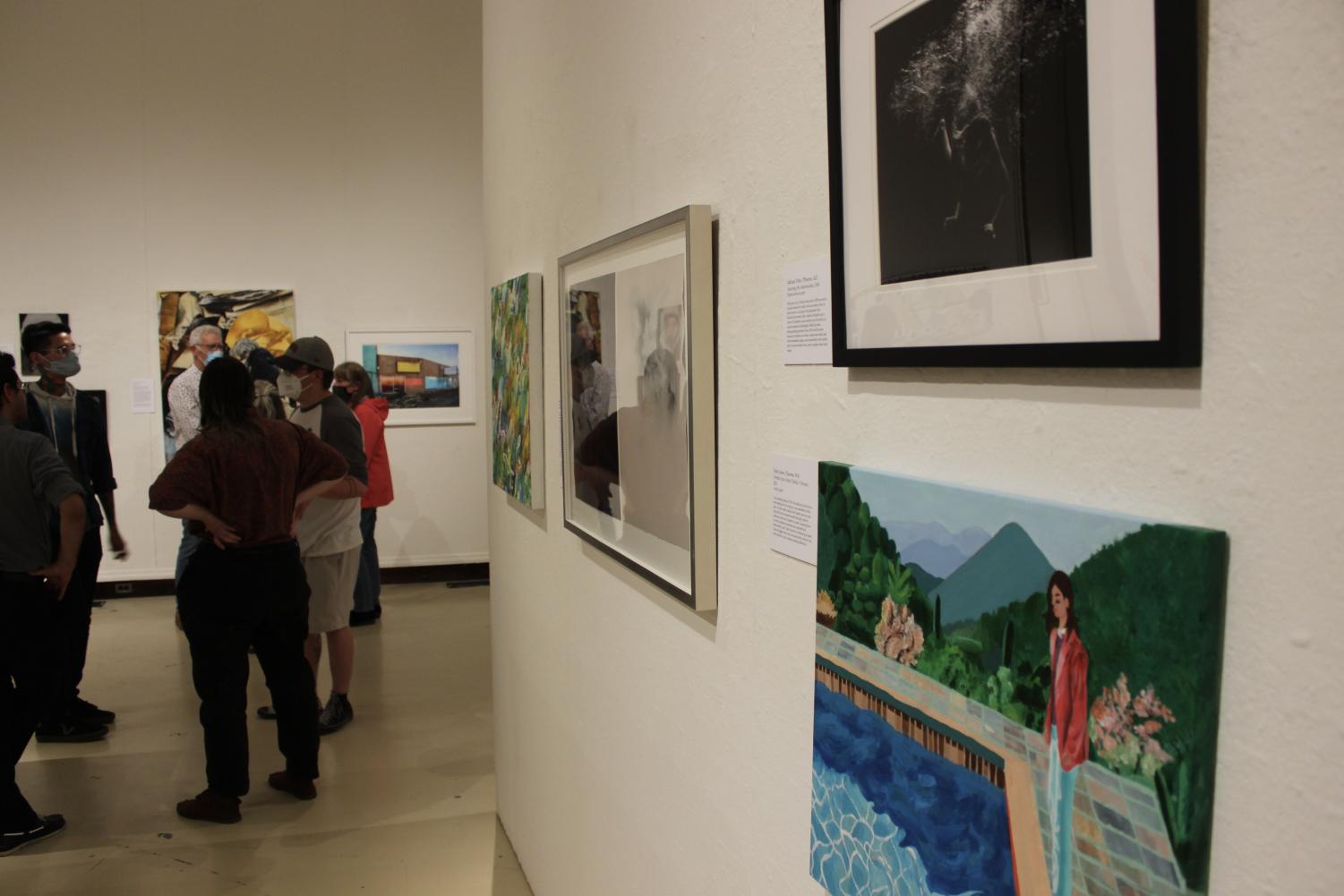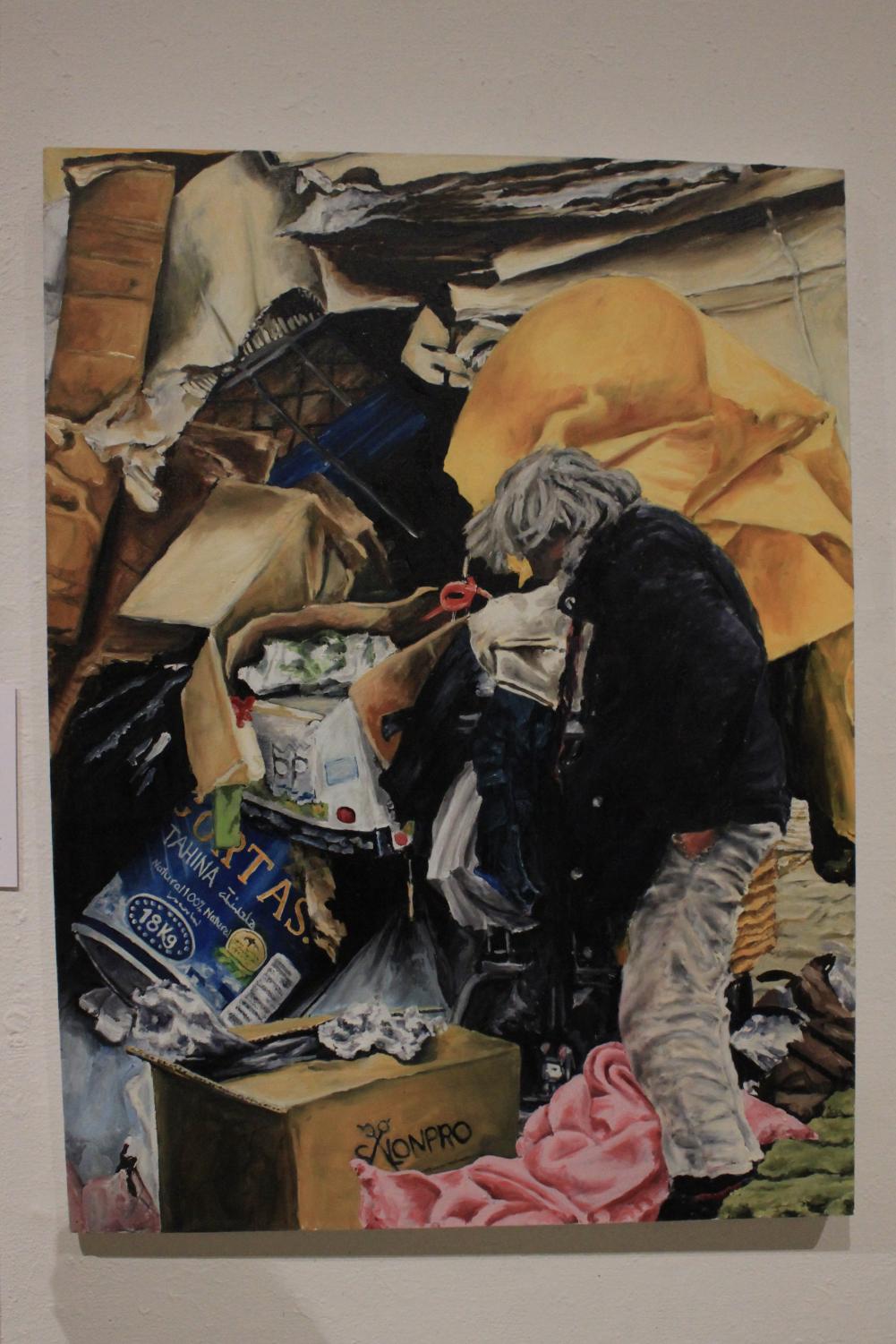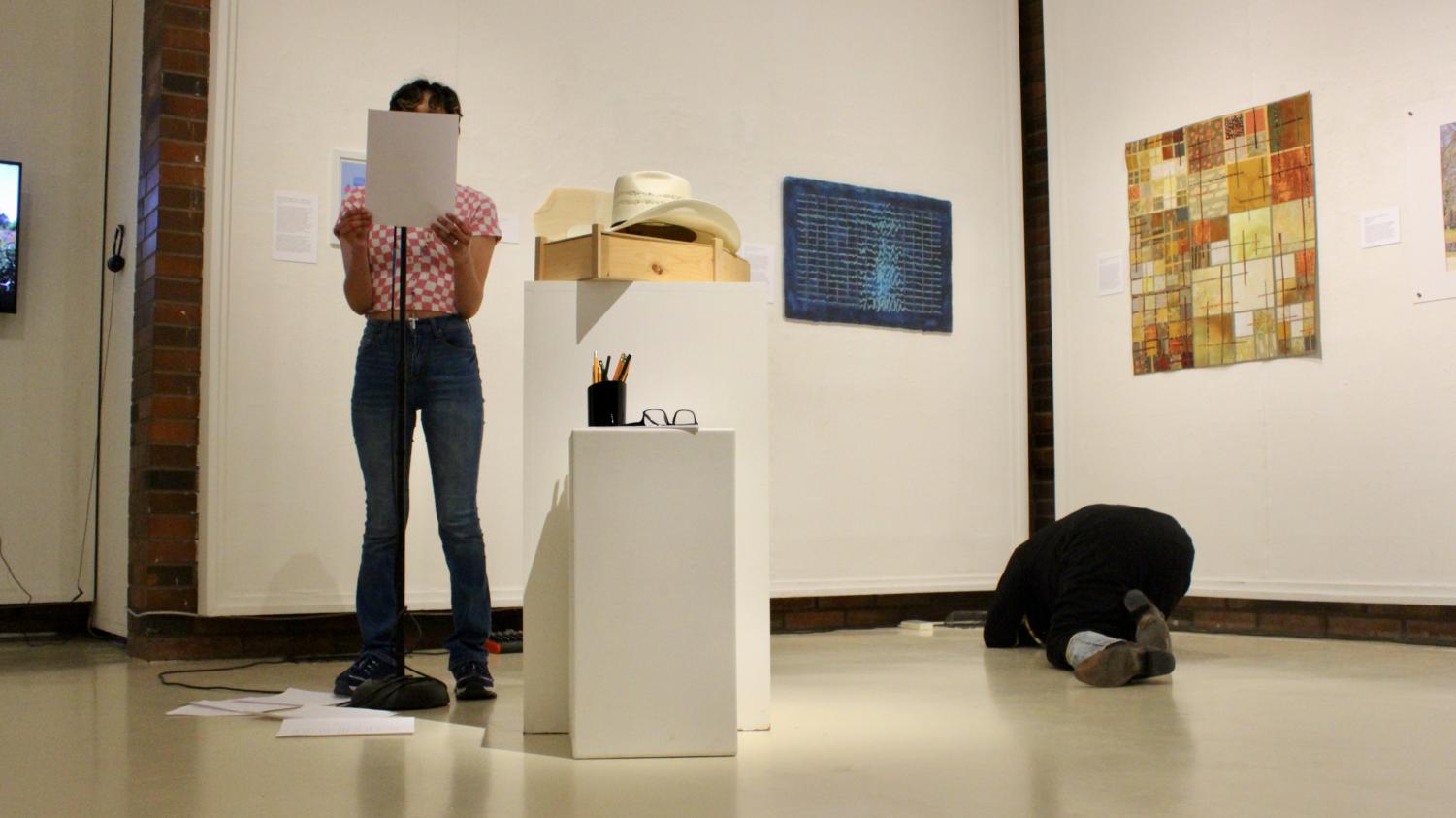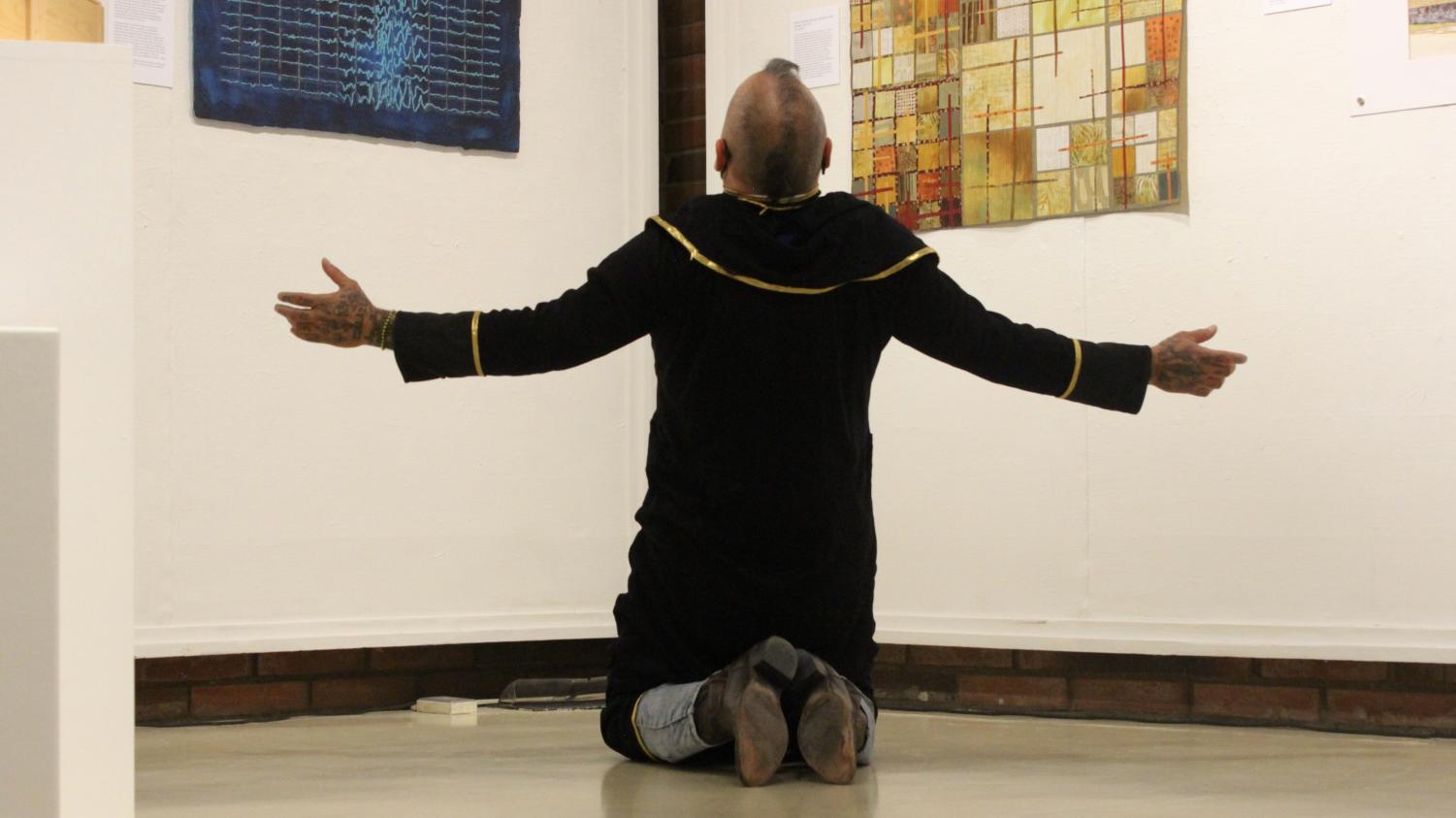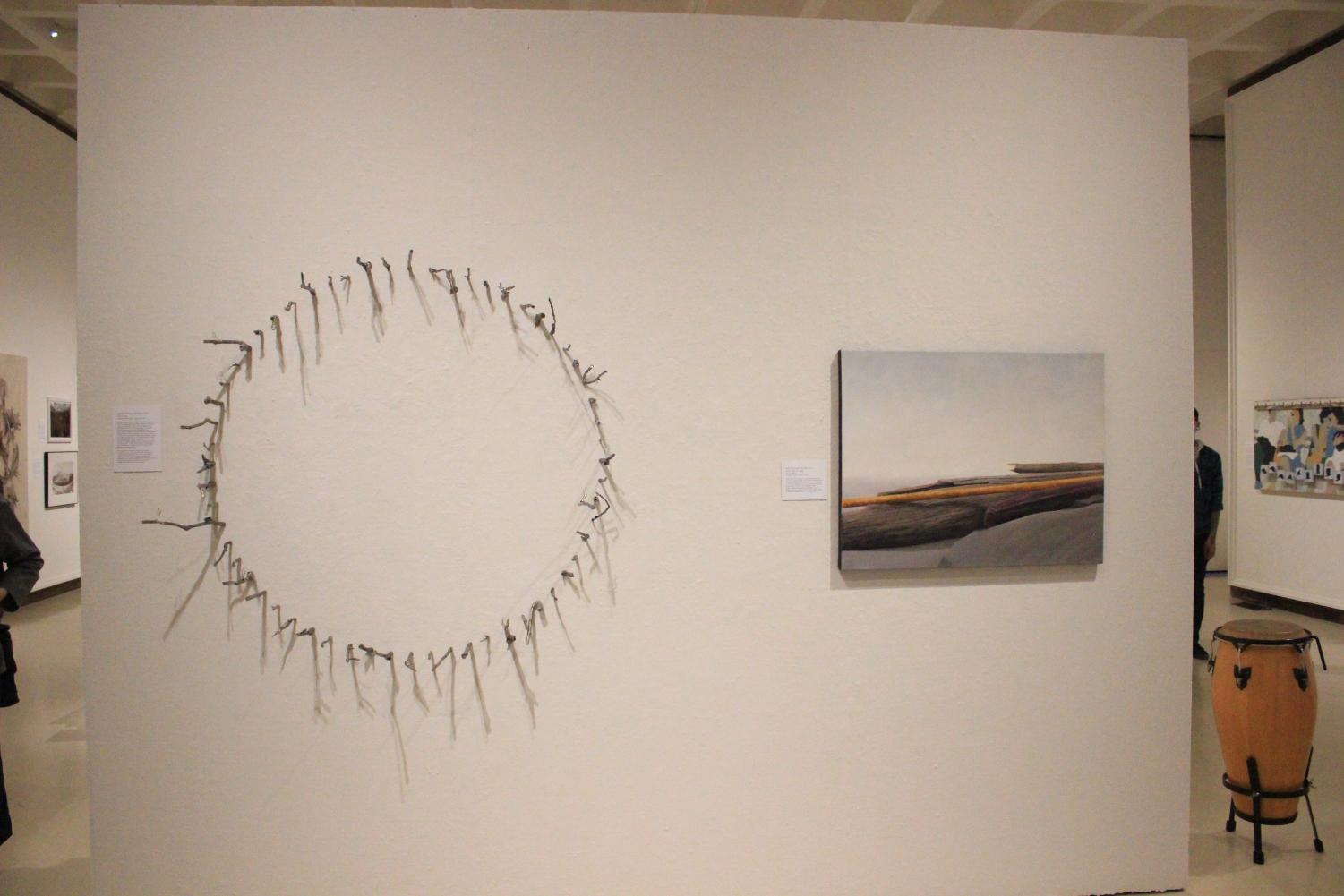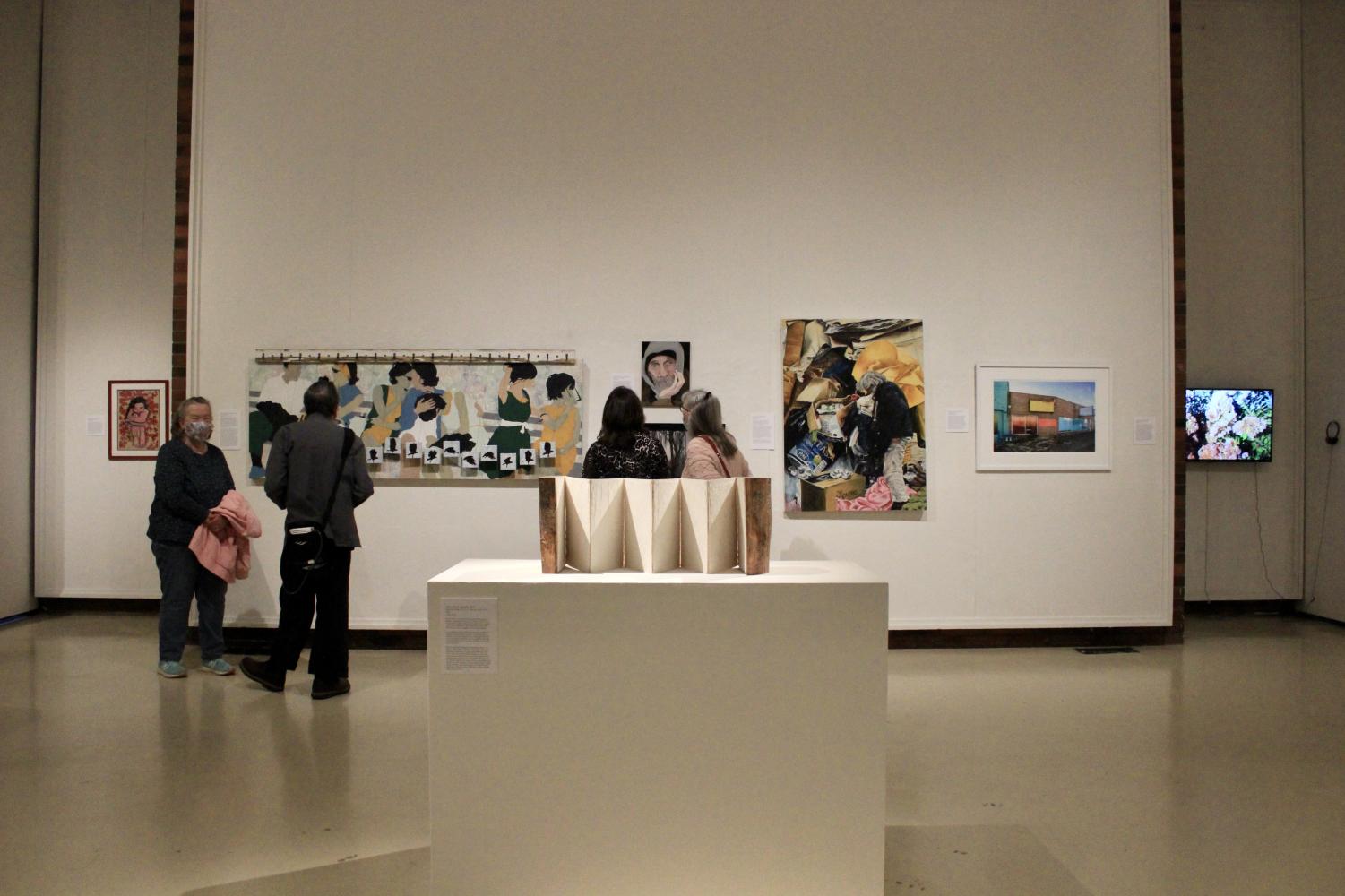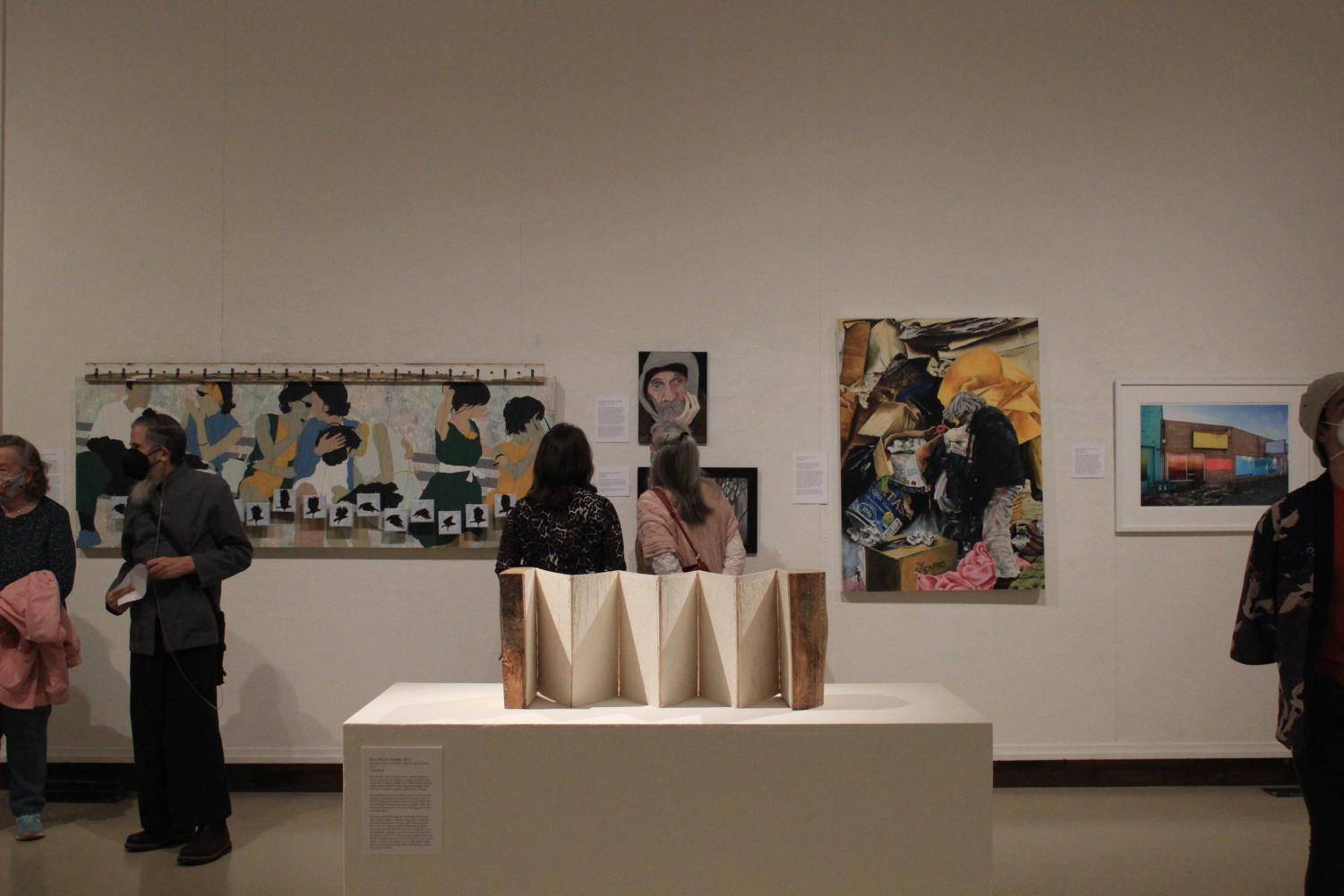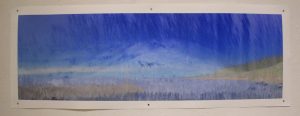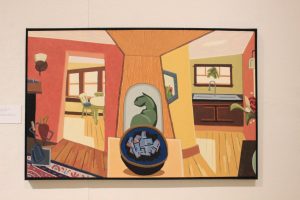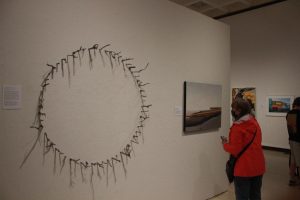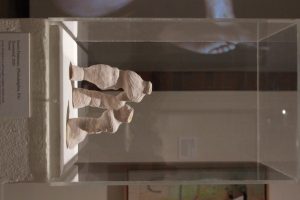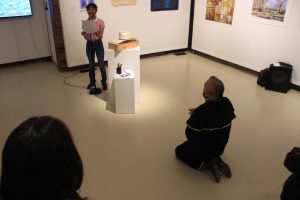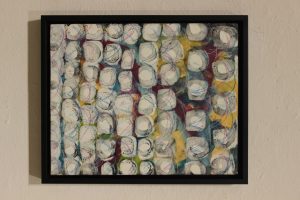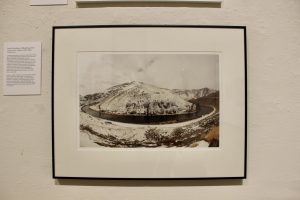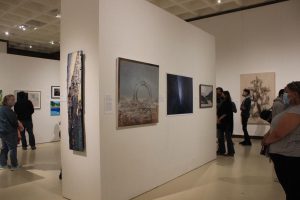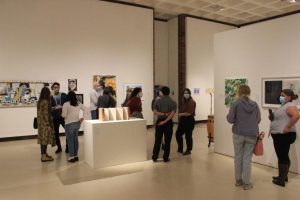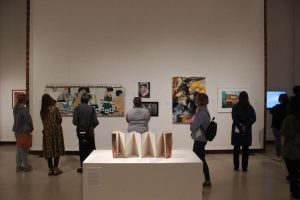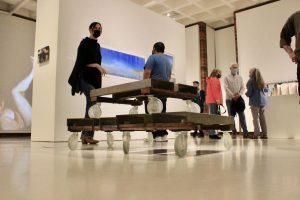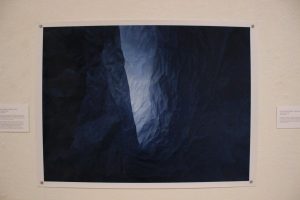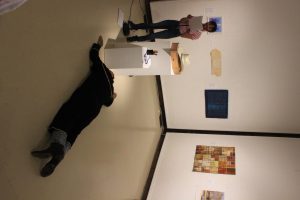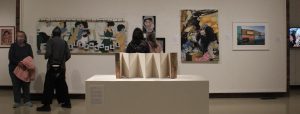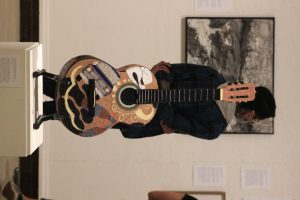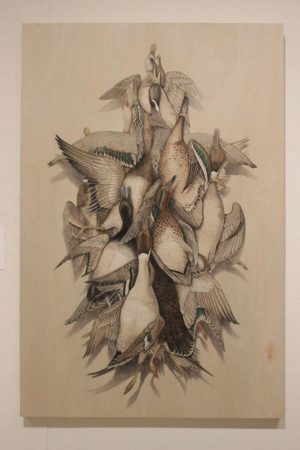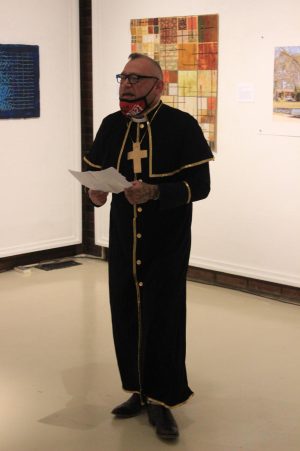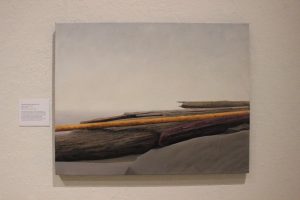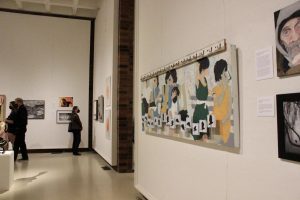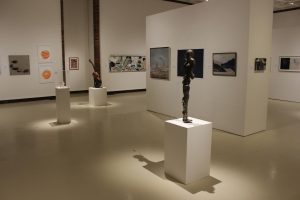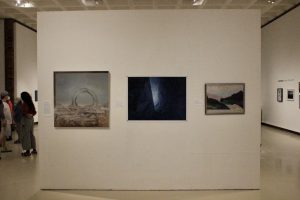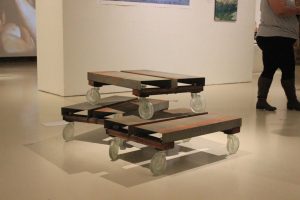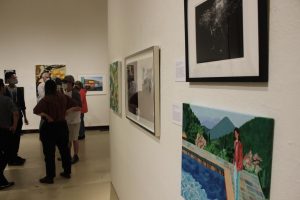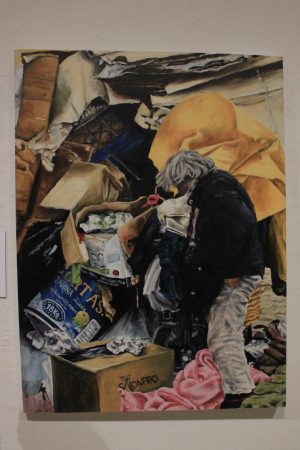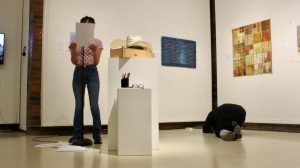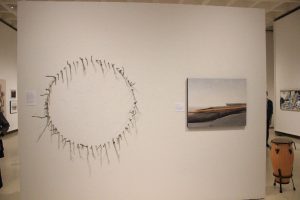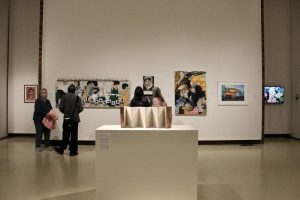“Where I-90 meets I-82” exhibit features artwork from around the nation
“Ceded Land” performance piece aims to transform trauma
April 13, 2022
“After a child drowns we close the well with a clay slab,” senior in Professional and Creative Writing and English Language and Literature Karla Maravilla said, her voice filled with sorrow while reading her poem entitled “Dis/membered” to a silently captivated audience at the Sarah Spurgeon Art Gallery last Thursday, April 7.
Members of the community gathered to share and reflect at the artist’s talk and reception celebrating the “Where I-90 Meets I-82” exhibit, available to view at the gallery now through April 23.
According to Sarah Spurgeon manager, Heather Horn Johnson, this particular jury exhibit is hosted by the gallery once every two years and the show is an open call to artists from anywhere around the nation. Johnson said she appreciates the eclectic nature of this work.
“We have professional artists, we have student artists, we have people who just create art at home for fun,” Johnson said. “We’ve got painting, photo, sculpture and video, just a little bit of everything.”
The multi-directional work was introduced to the community during a reception following a presentation by Haub Curator of Western Art at the Tacoma Art Museum, Faith Brower, in Randall Hall 117. She said she chose 62 pieces that evoked the experience of the pandemic, the social justice of this era and the emotions this time brings up for so many people.
Brower awarded first place in the show to a glass sculpture of a tattered Band-Aid with the words “do over” written across the middle, called “Do Over Band-Aid” by artist Terri Grant. Brower said this piece reflected the pain and healing necessary during this time.
Johnson said she appreciates Brower’s perspective because it “encompasses not just the traditional western European approach to art, but also she knows a lot about these different tribes and tribal cultures. A lot of the pieces are landscapes, but then she was also thinking about who that land originally belonged to.”
“Ceded Land” artwork
This focus tied in prudently with the painting submitted by English Senior Lecturer Xavier Cavazos called “Ceded Land.” The oil painting on found styrofoam depicts the white bones of an elk with red accents atop a black background. Cavazos said the name of the exhibit corresponding with its location made him think about how this location is on “ceded land.”
“To me, it’s like raped and stolen land, it’s not an offering of land, it’s an institutional government take-away of land,” Cavazos said. “When I was thinking of what piece to put in, I just started thinking ‘Ceded Land’ is a carcass, it’s the decimation of a people, specifically the Yakama Nation.”
Cavazos said racism and sexism violations are often ingrained into law and government documents that reinforce this language and prejudice.
“The way we have created reservation systems, it’s often like a fencing, controlling movement and also telling a people where to be with law,” Cavazos said.
Spoken word healing performance
The painting corresponded with a dramatic spoken word piece later performed by Cavazos and Maravilla. The performance involved audience interaction prior to starting and was held as a ceremony with intention to collectively heal trauma.
Hand-outs entitled “Communion of Agency” were distributed to event-goers and included a quote by Maravilla: “From rape in the fields, to racism in the workshop, from discrimination in the sex, to pollution in the lungs, from imperialism in the brain, to the body cut into borders, this performance will cleanse the physical and social illness that has peaked these past three years through traditional folk healing.”
Audience members were provided pieces of paper and asked to write down a time when they were hurt, and then asked to rip the paper in half and place both pieces into a small wooden coffin that was sealed before Maravilla and Cavazos performed. Attendees were instructed to reclaim the agency lost when these events occurred.
Maravilla read two poems from a collection of poetry she is planning to publish entitled “Casa De Negro.” The poetry surrounded themes of womanhood, birth, death, identity, transformation and grief.
“This is more than just us as individuals experiencing pain, it’s literally a community experiencing pain,” Maravilla said. “The majority of us push COVID, push the pandemic, push everything aside and I don’t think ignoring everything that’s happened these past two years is going to solve anything.”
While Maravilla’s somber words washed over the hushed crowd, Cavazos crawled on the ground in front of the sealed coffin, as though he was fighting a current, unable to move forward, all the while sobbing and crying out in agony, begging for help and grasping for something in the air above him.
Cavazos said he is not fully present in his body when performing and achieves a transcendent state where he feels the energy of the violations people write about.
“I am in a spiritual, mental place with my body that attones for those transgressions; it flows through me and out of me, through the screaming, crying, howling,” Cavazos said. “That’s the purging of it.”
Samuel Enriquez, a first-year graduate student studying painting, said he enjoyed the breadth of work from so many different geographic locations shown at the gallery, especially the performance piece.
“I feel like I got a sense of agony that was important to listen to, important agony,” Enriquez said.
Impact moving forward
Cavazos said his work centers around healing trauma from sexual abuse and holding space for men to process their own transgressions so they may move forward with better intentions.
“I think we need to start making spaces in these conversations for men to announce that without shame, so that they can start working through the processes of correcting that behavior,” Cavazos said. “Men have committed a lot of sexual harassment, sexual abuse, trauma- so my work examines being a victim and then victimizing people as well. By doing so, I think it’s the first moment in awareness. You’re never going to change your behavior if you’re not aware of your behavior.”
Cavazos said he aims to dismantle systems of objectification toward women and systems of controlling people with force, money and violence. He said he works to correct harmful thoughts in his own mind to put this healing into action.
“Healing is possible,” Cavazos said. “Being vulnerable is a tremendous act of courage. The best way I’ve figured out to inspire people to be courageous is to be my most vulnerable construction in that moment, and then to really allow myself to become a vector of the energy of the crowd.”
Brower said she hopes this exhibit will, “create space for people to witness the amazing art that covers a variety of subjects and brings people together to think about the power of art in tough times. No matter how tough life gets, artists are still creating such powerful and important work.”


